Botany/Plant Science jobs
- Refine results

Broaden your search
- Life Sciences 261
Refine your search
- Life Sciences, Botany/Plant Science Remove selection
- North America 1
- Europe 2
- Asia 1
- Middle East 1
- Academia 2
- All Industry 1
- Non-Profit 1
- Full Time 3
- Group Leader/Principal Investigator 2
- Postdoc Fellowship 1
- Other 1
- Employer 1
Found 4 jobs
Full professor in plant biology at the salk institute for biological studies.
- La Jolla, California
- The expected pay range for this position is $215,000 to $350,000
- The Salk Institute for Biological Studies
The Salk Institute for Biological Studies invites established faculty candidates to apply for a Full Professor position in Plant Biology. Our searc...
View details Full Professor in Plant Biology at The Salk Institute for Biological Studies
- Save Full Professor in Plant Biology at The Salk Institute for Biological Studies You need to sign in or create an account to save
The 2nd International Young Scholars “Qingbai Forum” of Anhui Agricultural University
- No. 130, Changjiang West Road, Hefei, Anhui Province
- Salary will be comparable and competitive to international standards.
- Anhui Agricultural University
View details The 2nd International Young Scholars “Qingbai Forum” of Anhui Agricultural University
- Save The 2nd International Young Scholars “Qingbai Forum” of Anhui Agricultural University You need to sign in or create an account to save
Lean Engineer (Gebkim Plant)
- Gebze, Turkey
- Competitive
At Henkel, you can build on a strong legacy and leading positions in both industrial and consumer businesses to reimagine and improve life every da...
View details Lean Engineer (Gebkim Plant)
- Save Lean Engineer (Gebkim Plant) You need to sign in or create an account to save
Max Planck Foundation Research Group Leader in the area of carbon capture technologies
- Germany (DE)
- W2 position
- Max Planck Society
To support talented scholars early in their career, the MPG invites applications for three positions as Max Planck Foundation Research Group Leaders.
View details Max Planck Foundation Research Group Leader in the area of carbon capture technologies
- Save Max Planck Foundation Research Group Leader in the area of carbon capture technologies You need to sign in or create an account to save

Plantae’s Career Center includes the only job board available for the global plant science community
Recent Job Postings
- Postdoctoral Associate Position in Computational Genomics | Yale University
- VP of Mechanical Engineering | Verdant Robotics, Inc.
- Permit Development Unit Supervisor (Environmental Engineer 5) | Washington State Department of Ecology
- Civil Engineer, Transmission & Distribution | Chelan PUD
- Structural Engineer Project Manager | Wallace Design Collective
- Senior Civil Engineer | City of Palm Springs
- Assistant Professor | Mississippi State University
- Division Director, Division of Biological Infrastructure (IPA) | The National Science Foundation
- Principal Financial Accountant | Sacramento Municipal Utility District
- Municipal Stormwater Permit Implementation Planner (Environmental Planner 3) (2 positions) | Washington State Department of Ecology
- Postdoctoral Position in Complex Disease Genetics - Johns Hopkins University | JOHNS HOPKINS UNIVERSITY
- Assistant/Associate/Full Professor of Medical & Molecular Genetics (IU School of Medicine) | Indiana University School of Medicine - Medical and Molecular Genetics
Plantae’s Career Center includes the only job board available for the global plant science community. Plantae also offers career resources, education, and online career networks within the online community.
For job seekers:
For employers:, featured webinar.
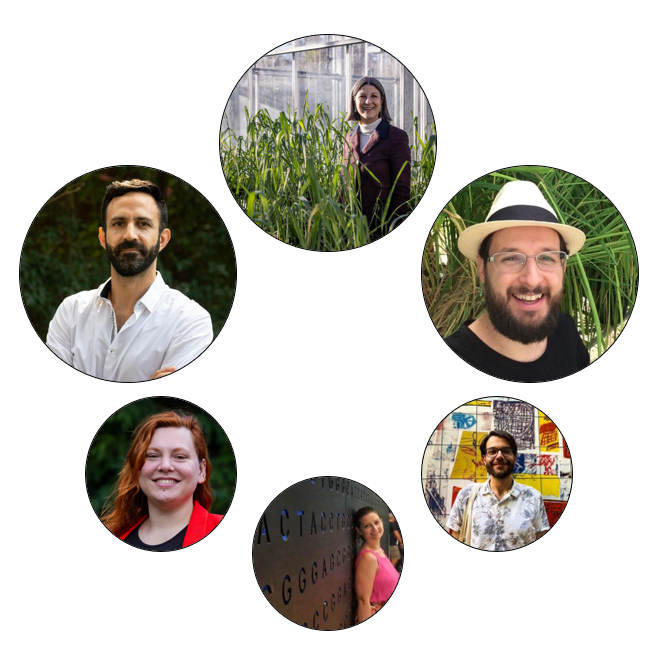
Plantae Presents: Exploring Plant Science Research Across the Globe: Insights from Leading Researchers
- Manage your Membership
- Join an ASPB Section
- Visit our Store
- Sponsorship & Advertising
- Make a Donation
- Read the Plant Science Today Blog
Member Services
- (301) 251-0560
Awards & Funding
- Apply for Grants & Travel Awards
Meetings & Events
- Meeting Management Services
- Plant Synthetic Biology 2021
- Plant Biology Meeting
Publications & News
- ASPB Journals
- Read The Plant Cell Blog
- Read the Plant Physiology Blog
- Submit an Article
- Read the ASPB News
- Get News & Updates
- Check out The Signal
About Plantae
- Join Plantae
- Subscribe to the Plant Science Research Weekly
- Search for Careers & Internships
- Listen to Plantae Podcasts
- Submit your Science Event to our Calendar
- *All Plantae content is licensed under a Creative Commons A-NC 2.0 License

Life Science Research Professional 1
🔍 school of medicine, stanford, california, united states.
The Center for Personal Dynamic Regulome at Stanford University is seeking a Life Science Research Professional 1 to perform basic functions and activities involved in defined research projects, and independently conduct and analyze experiments. The scientist will be directly mentored by a PhD student and will work in the stimulating and collaborative environment of the Chang Lab where we do cutting edge research and make exciting discoveries that improve understanding and treatment of cancer.
LSRP will collaborate in the design and execution of molecular biology experiments designed for basic biology study of cancer. Responsibilities include planning and executing experiments in collaboration with the PI and research team, using modern molecular biology techniques such as genetic screening and perturbations and next-generation sequencing; analyzing data and modifying experiments as needed; and assisting in the organization and general maintenance of the lab as needed.
Duties include:
- Plan approach to experiments in support of research projects in lab and/or field based on knowledge of scientific theory.
- Independently conduct experiments; maintain detailed records of experiments and outcomes.
- Apply the theories and methods of a life science discipline to interpret and perform analyses of experiment results; offer suggestions regarding modifications to procedures and protocols in collaboration with senior researcher.
- Review literature on an ongoing basis to remain current with new procedures and apply learnings to related research.
- Contribute to publication of findings as needed. Participate in the preparation of written documents, including procedures, presentations, and proposals.
- Help with general lab maintenance as needed; maintain lab stock, manage chemical inventory and safety records, and provide general lab support as needed.
- Assist with orientation and training of new staff or students on lab procedures or techniques.
*- Other duties may also be assigned
EDUCATION & EXPERIENCE (REQUIRED):
Bachelor's degree in related scientific field.
KNOWLEDGE, SKILLS AND ABILITIES (REQUIRED):
- General understanding of scientific principles. Demonstrated performance to use knowledge and skills when needed.
- Demonstrated ability to apply theoretical knowledge of science principals to problem solve work.
- Ability to maintain detailed records of experiments and outcomes.
- General computer skills and ability to quickly learn and master computer programs, databases, and scientific applications.
- Ability to work under deadlines with general guidance.
- Excellent organizational skills and demonstrated ability to accurately complete detailed work.
PHYSICAL REQUIREMENTS*:
- Frequently stand, walk, twist, bend, stoop, squat, grasp lightly, use fine manipulation, grasp forcefully, perform desk-based computer tasks, use telephone, write by hand, lift, carry, push and pull objects weighing over 40 pounds.
- Occasionally sit, kneel, crawl, reach and work above shoulders, sort and file paperwork or parts.
- Rarely climb, scrub, sweep, mop, chop and mix or operate hand and foot controls.
- Must have correctible vision to perform duties of the job.
- Ability to bend, squat, kneel, stand, reach above shoulder level, and move on hard surfaces for up to eight hours.
- Ability to lift heavy objects weighing up to 50 pounds.
- Ability to work in a dusty, dirty, and odorous environment.
- Position may require repetitive motion.
*- Consistent with its obligations under the law, the University will provide reasonable accommodation to any employee with a disability who requires accommodation to perform the essential functions of his or her job.
WORKING CONDITIONS:
- May require working in close proximity to blood borne pathogens.
- May require work in an environment where animals are used for teaching and research.
- Position may at times require the employee to work with or be in areas where hazardous materials and/or infectious diseases are present.
- Employee must perform tasks that require the use of personal protective equipment, such as safety glasses and shoes, protective clothing and gloves, and possibly a respirator.
- May require extended or unusual work hours based on research requirements and business needs.
WORK STANDARDS:
- Interpersonal Skills: Demonstrates the ability to work well with Stanford colleagues and clients and with external organizations.
- Promote Culture of Safety: Demonstrates commitment to personal responsibility and value for safety; communicates safety concerns; uses and promotes safe behaviors bases on training and lessons learned.
- Subject to and expected to comply with all applicable University policies and procedures, including but not limited to the personnel policies and other policies found in the University’s Administrative Guide, http://adminguide.stanford.edu .
The expected pay range for this position is $26.44 to $36.54 per hour.
Stanford University provides pay ranges representing its good faith estimate of what the university reasonably expects to pay for a position. The pay offered to a selected candidate will be determined based on factors such as (but not limited to) the scope and responsibilities of the position, the qualifications of the selected candidate, departmental budget availability, internal equity, geographic location and external market pay for comparable jobs.
At Stanford University, base pay represents only one aspect of the comprehensive rewards package. The Cardinal at Work website ( https://cardinalatwork.stanford.edu/benefits-rewards ) provides detailed information on Stanford’s extensive range of benefits and rewards offered to employees. Specifics about the rewards package for this position may be discussed during the hiring process.
Consistent with its obligations under the law, the University will provide reasonable accommodations to applicants and employees with disabilities. Applicants requiring a reasonable accommodation for any part of the application or hiring process should contact Stanford University Human Resources by submitting a contact form .
Stanford is an equal employment opportunity and affirmative action employer. All qualified applicants will receive consideration for employment without regard to race, color, religion, sex, sexual orientation, gender identity, national origin, disability, protected veteran status, or any other characteristic protected by law.
The job duties listed are typical examples of work performed by positions in this job classification and are not designed to contain or be interpreted as a comprehensive inventory of all duties, tasks, and responsibilities. Specific duties and responsibilities may vary depending on department or program needs without changing the general nature and scope of the job or level of responsibility. Employees may also perform other duties as assigned.
- Schedule: Full-time
- Job Code: 4943
- Employee Status: Regular
- Requisition ID: 102988
- Work Arrangement : On Site
My Submissions
Track your opportunities.
Similar Listings
School of Medicine, Stanford, California, United States
📁 Research
Post Date: Jan 29, 2024
Post Date: Feb 15, 2023
Post Date: Aug 05, 2022
Global Impact We believe in having a global impact
Climate and sustainability.
Stanford's deep commitment to sustainability practices has earned us a Platinum rating and inspired a new school aimed at tackling climate change.
Medical Innovations
Stanford's Innovative Medicines Accelerator is currently focused entirely on helping faculty generate and test new medicines that can slow the spread of COVID-19.
From Google and PayPal to Netflix and Snapchat, Stanford has housed some of the most celebrated innovations in Silicon Valley.
Advancing Education
Through rigorous research, model training programs and partnerships with educators worldwide, Stanford is pursuing equitable, accessible and effective learning for all.
Working Here We believe you matter as much as the work
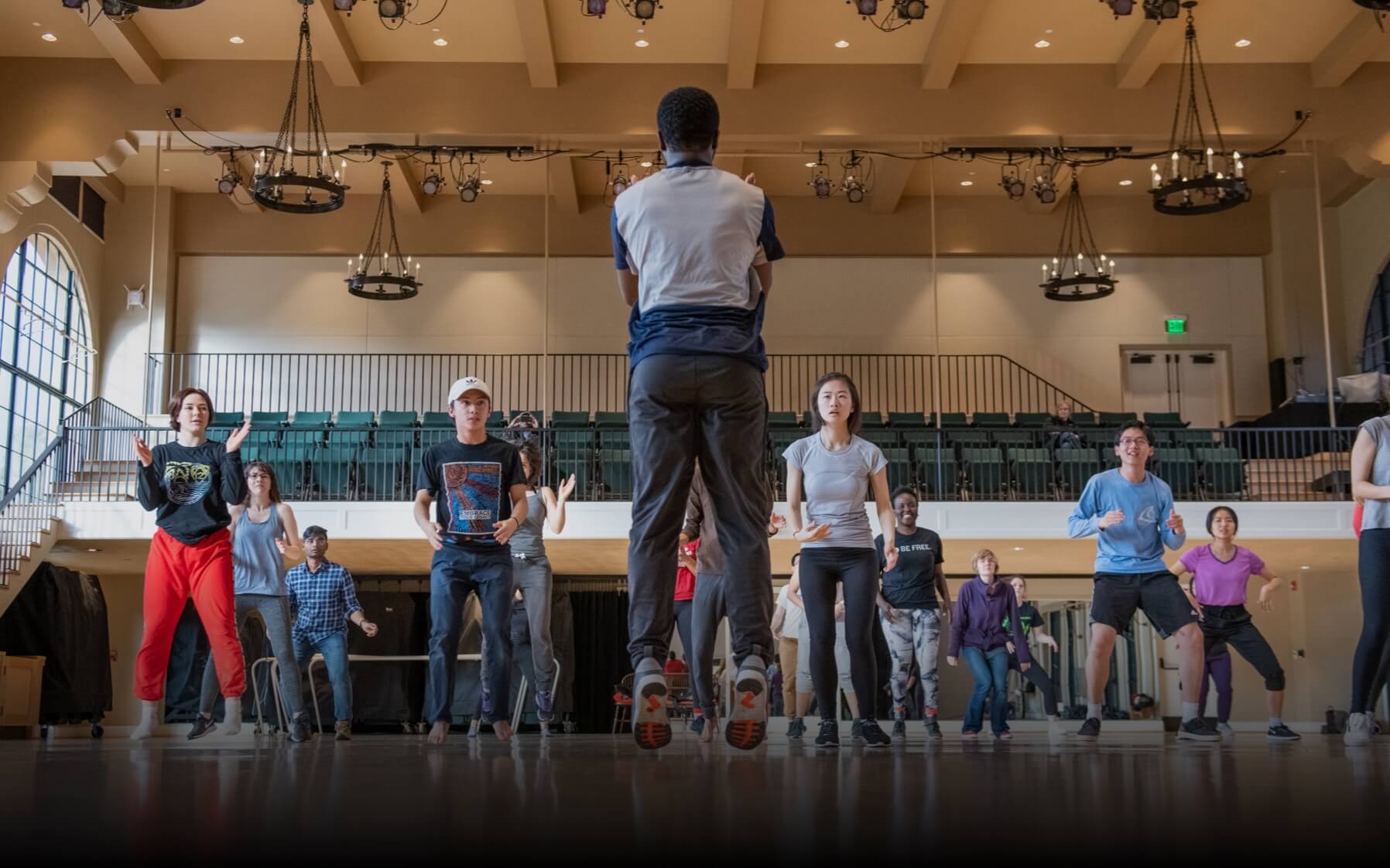
I love that Stanford is supportive of learning, and as an education institution, that pursuit of knowledge extends to staff members through professional development, wellness, financial planning and staff affinity groups.
School of Engineering
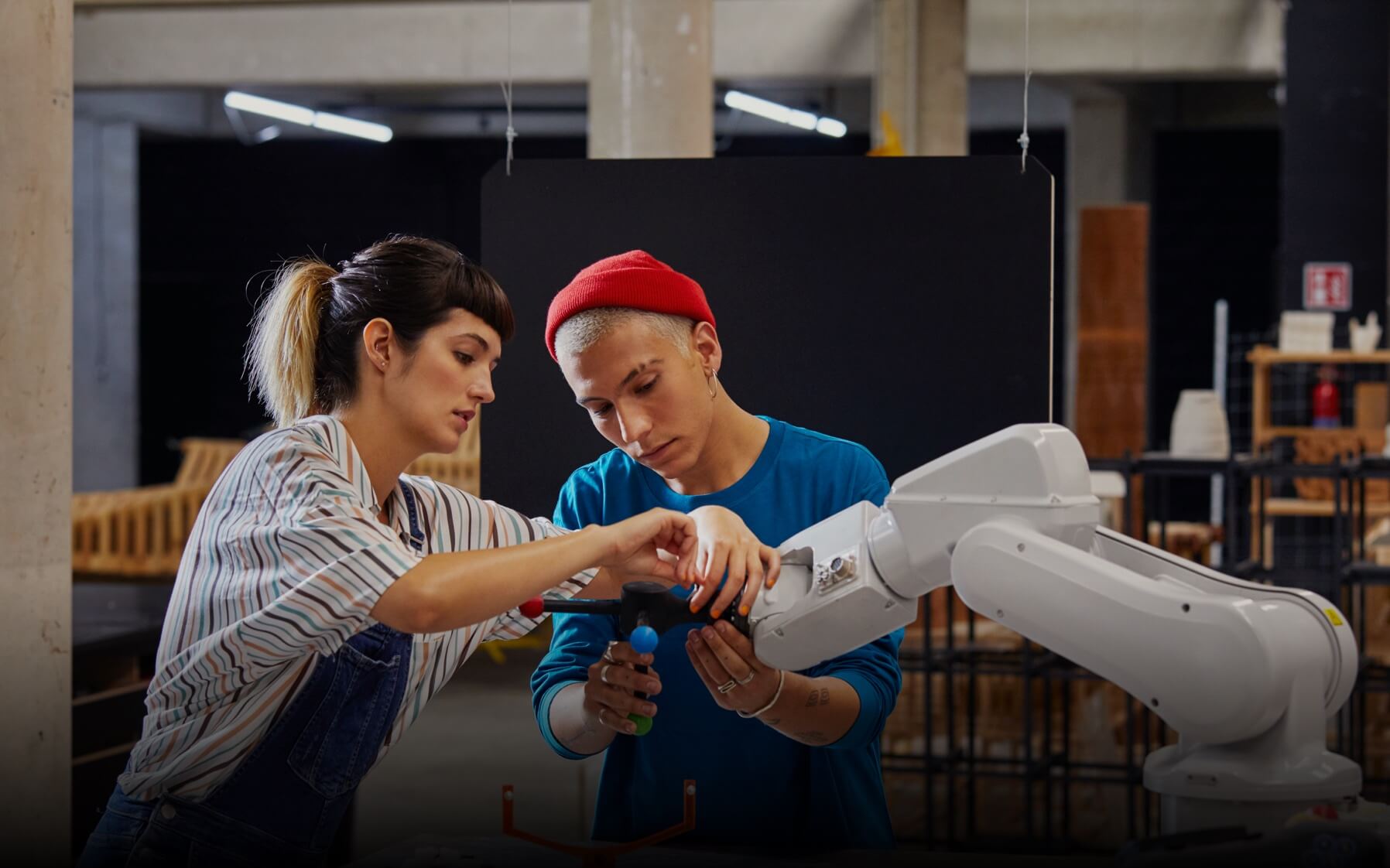
I get to apply my real-world experiences in a setting that welcomes diversity in thinking and offers support in applying new methods. In my short time at Stanford, I've been able to streamline processes that provide better and faster information to our students.
Phillip Cheng
Office of the Vice Provost for Student Affairs
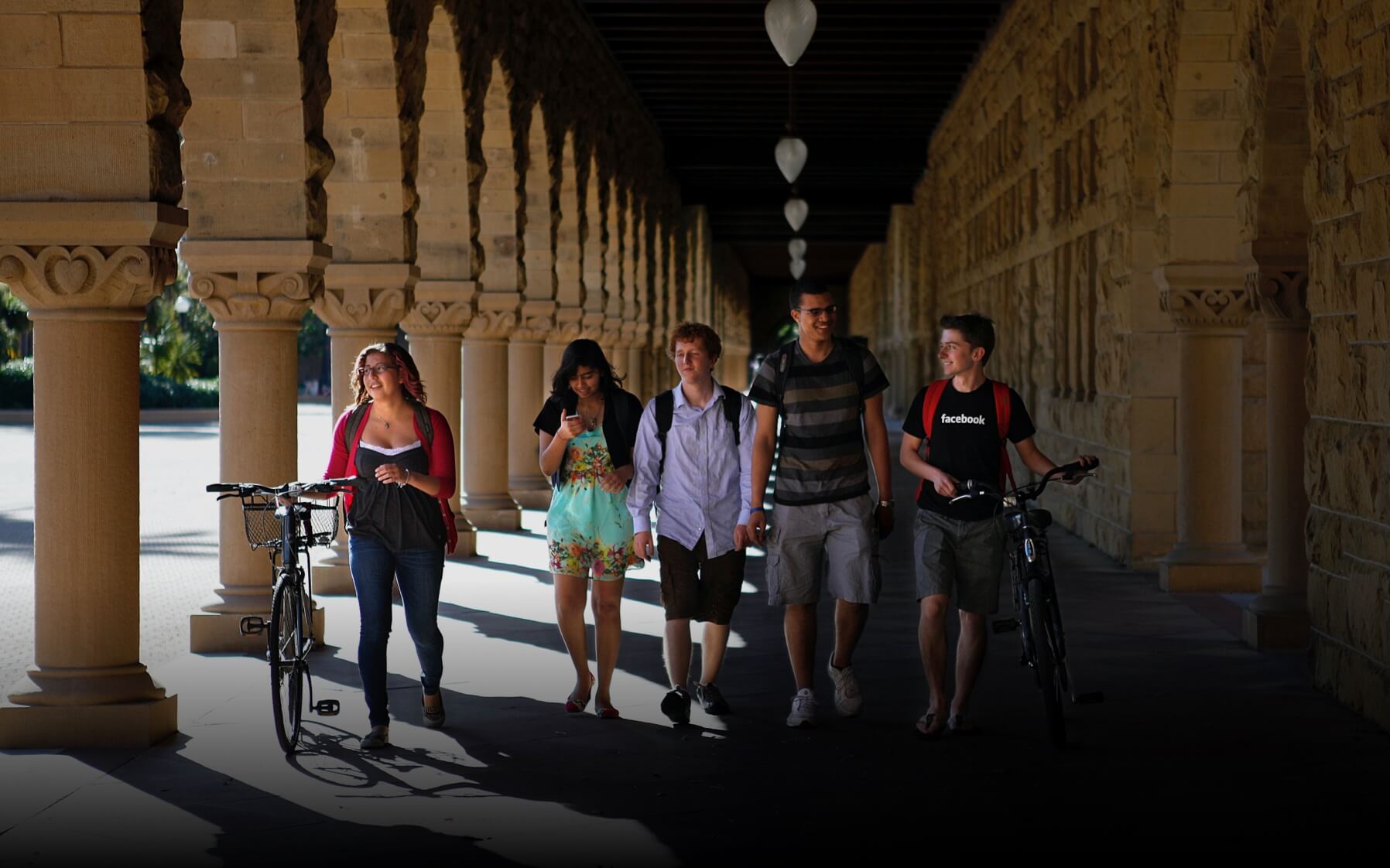
Besides its contributions to science, health, and medicine, Stanford is also the home of pioneers across disciplines. Joining Stanford has been a great way to contribute to our society by supporting emerging leaders.
Denisha Clark
School of Medicine
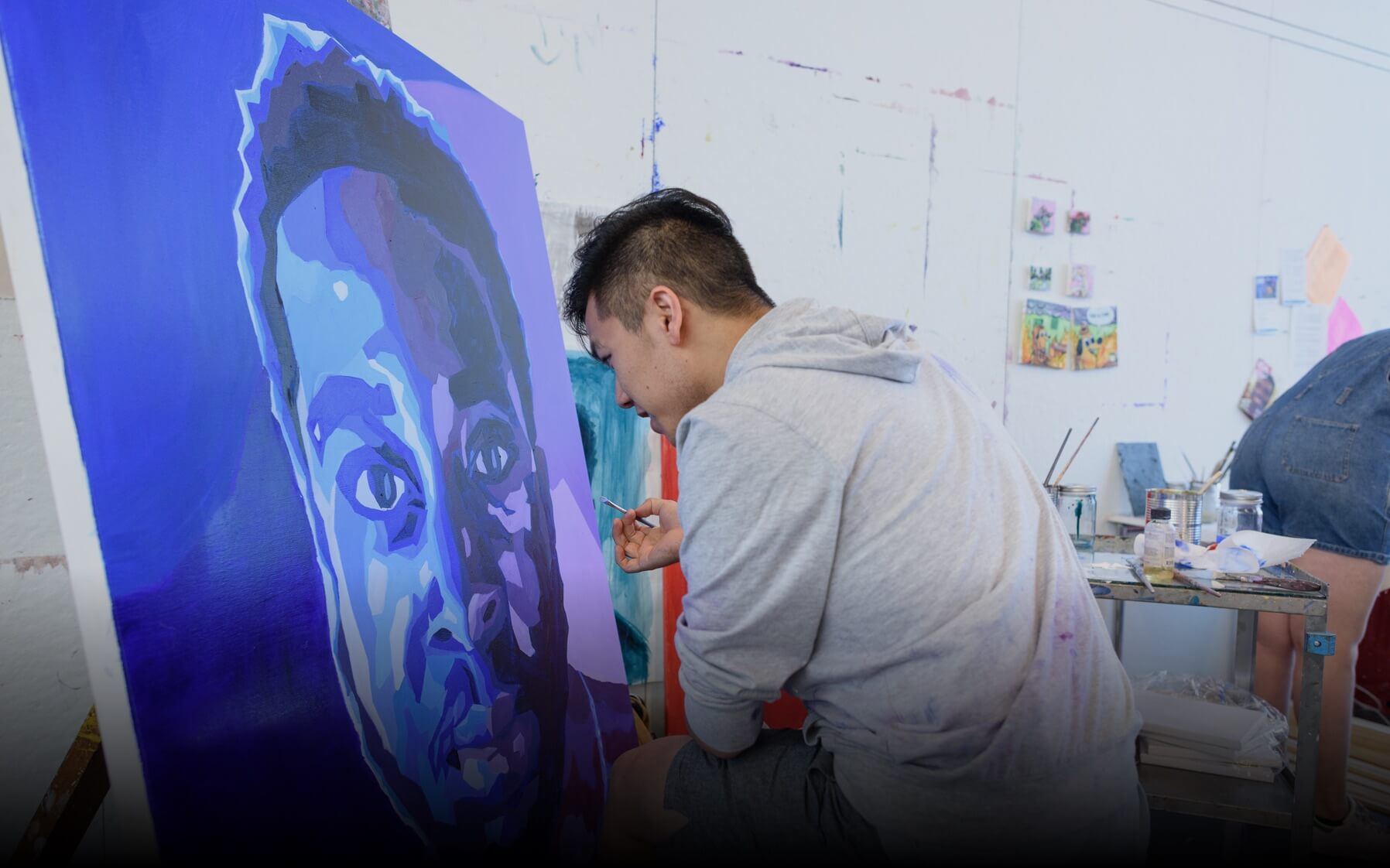
I like working in a place where ideas matter. Working at Stanford means being part of a vibrant, international culture in addition to getting to do meaningful work.
Office of the President and Provost
Getting Started We believe that you can love your job
Join Stanford in shaping a better tomorrow for your community, humanity and the planet we call home.
- 4.2 Review Ratings
- 81% Recommend to a Friend
View All Jobs

Scientist I
- Madison, Wisconsin
- COLLEGE OF AGRICULTURAL & LIFE SCIENCES/BIOCHEMISTRY-GEN
- Staff-Full Time
- Opening at: Apr 22 2024 at 14:40 CDT
- Closing at: May 6 2024 at 23:55 CDT
Job Summary:
Research in the Gisriel Lab, within the Department of Biochemistry, is focused on the molecular mechanisms of photosynthesis. The Scientist in this position will help to set up the laboratory equipment, train students on laboratory equipment, perform protein purifications, perform protein characterization, set up a growth room/area for cyanobacterial cultures, maintain cyanobacterial cultures, perform genetic alterations, prepare and analyze data, and perform other tasks as needed. Experience with protein purification, cyanobacterial growth, and molecular biology is preferred. Previous experience in a laboratory setting is required.
Responsibilities:
- 20% Assists with the identification of research problems and the development of research methodologies and procedures
- 20% Collects and analyzes research data, conducts experiments and interviews, and documents results according to established policies and procedures under general supervision and limited responsibility
- 20% Conducts literature reviews, prepares reports and materials, and disseminates information to appropriate entities
- 20% Attends and assists with the facilitation of scholarly events and presentations in support of continued professional development and the dissemination of research information
- 20% Serves as a main point of contact and liaison with internal and external stakeholders providing information and representing the interests of a specialized research area
Institutional Statement on Diversity:
Diversity is a source of strength, creativity, and innovation for UW-Madison. We value the contributions of each person and respect the profound ways their identity, culture, background, experience, status, abilities, and opinion enrich the university community. We commit ourselves to the pursuit of excellence in teaching, research, outreach, and diversity as inextricably linked goals. The University of Wisconsin-Madison fulfills its public mission by creating a welcoming and inclusive community for people from every background - people who as students, faculty, and staff serve Wisconsin and the world. For more information on diversity and inclusion on campus, please visit: Diversity and Inclusion
Required PhD in cell and molecular biology or related field.
Qualifications:
10 years of relevant research experience in the life sciences is required. Strong communication skills and ability to interact effectively with lab members. Strong research skills particularly with data collection and analysis. The individual will be expected to be highly motivated to generate and analyze data, and function efficiently, independently, and in a skilled team and cooperatively with the principal investigator.
Full Time: 100% It is anticipated this position requires work be performed in-person, onsite, at a designated campus work location.
Appointment Type, Duration:
Ongoing/Renewable
Minimum $72,000 ANNUAL (12 months) Depending on Qualifications The anticipated salary range for this position is $72,000 up to $90,000 but, final salary will depend on experience and qualifications. Employees in this position can expect to receive benefits such as generous vacation, holidays, and paid time off; competitive insurances and savings accounts; retirement benefits. Benefits information can be found at: https://www.wisconsin.edu/ohrwd/benefits/download/fasl.pdf .
Additional Information:
The College of Agricultural and Life Sciences (CALS) is committed to maintaining and growing a culture that embraces diversity, inclusion, and equity, believing that these values are foundational elements of our excellence and fundamental components of a positive and enriching learning and working environment for all students, faculty, and staff. At CALS, we acknowledge that bias, prejudice, racism, and hate have historically occurred in many forms that cause significant and lasting harm to members of our community. We commit to taking actions each day toward a college that is inclusive and welcoming to all.
How to Apply:
Click on the "Apply Online" button to start the application process. Applications must be received through UW Madison's online application system. Applications submitted outside of this system will not be considered. You will be prompted to upload the following documents/Application Materials: Resume (required) - Detail your educational and professional background Cover letter (required) - Refer to your related work experience You will also be prompted to provide three professional references. It's important that your cover letter and resume reflect your experience for this position related to the Qualifications section. Your application materials will be used during our evaluation to determine your qualifications as they relate to the job. Please note your application materials may be used as a writing sample. The most qualified applicants will be invited to participate in the next step of the selection process.
Stefanie Lannoye [email protected] 608-261-1029 Relay Access (WTRS): 7-1-1. See RELAY_SERVICE for further information.
Official Title:
Scientist I(RE043)
Department(s):
A07-COL OF AG & LIFE SCIENCES/BIOCHEMISTRY
Employment Class:
Academic Staff-Renewable
Job Number:
The university of wisconsin-madison is an equal opportunity and affirmative action employer..
You will be redirected to the application to launch your career momentarily. Thank you!
Frequently Asked Questions
Applicant Tutorial
Disability Accommodations
Pay Transparency Policy Statement
Refer a Friend
You've sent this job to a friend!
Website feedback, questions or accessibility issues: [email protected] .
Learn more about accessibility at UW–Madison .
© 2016–2024 Board of Regents of the University of Wisconsin System • Privacy Statement

- People Directory
- Safety at UD

- Campus & Community
- Nation & World
- Culture & Society

NASA Science Chief invites all to ‘do NASA science’
Article by Beth Miller Photos by Kathy F. Atkinson and Evan Krape April 24, 2024
Nicky Fox shares joy of NASA discoveries and UD research partnerships during April 18 visit
Nicola “Nicky” Fox doesn’t actually remember seeing astronaut Neil Armstrong take humanity’s first walk on the surface of the moon. But she knows she was a witness. Her father had taken her from her crib and propped her up in front of the television to be sure his 8-month-old daughter could see the amazing feat.
Her dad planted a fascination with space in his daughter, and now Fox is chief of NASA’s Science Mission Directorate, with jurisdiction over more than 140 missions exploring just about everything in the known universe — from distant galaxies to the bottom of the sea, from massive stars to subatomic particles.
Her path to leadership in the world’s largest space agency took many turns along the way, including encounters with “imposter syndrome.” But she brought a clear and direct message to the University of Delaware community during a daylong visit Thursday, April 18, inviting everyone to “do NASA science.”
Fox, an expert in space plasma physics, is keen to share the joys of NASA research with everyone — from the UD scientists and engineers working on scores of projects with direct relevance to NASA missions to “citizen scientists” — volunteers who just want to be part of it all.
“Science is for everybody,” she said during a whirlwind tour of UD, which started at the Delaware Space Grant Consortium’s annual symposium and included visits to four labs, presentations by 10 researchers, a public lecture and “fireside chat” with UD President Dennis Assanis, an informal “ask-me-anything” meeting with physics and astronomy students, and finally, the Vernon Lecture, a public event presented by the Mount Cuba Astronomical Observatory at UD’s Clayton Hall.
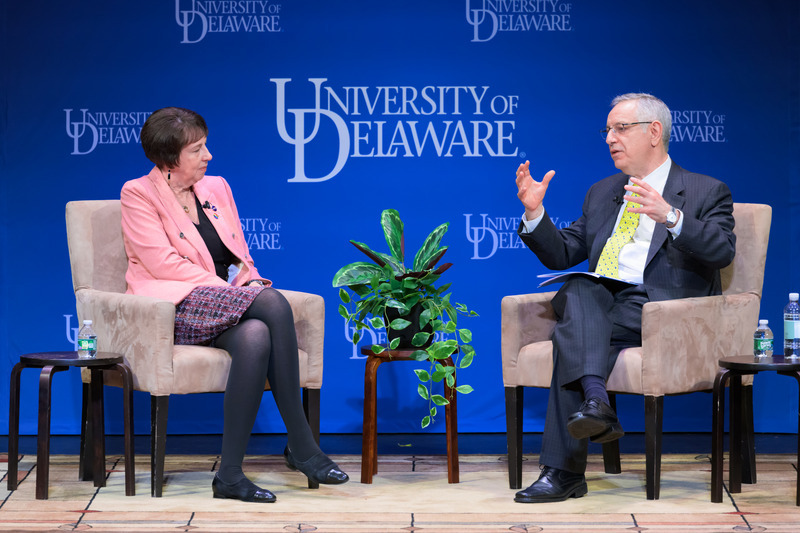
Along the way, she recognized the work of UD space plasma physicists, astronomers, chemical engineers, microbiologists, materials scientists, data scientists, marine scientists and plant scientists, to name just a few.
And in the midst of this packed agenda, Terri Kelly, chair of UD’s Board of Trustees, recognized Fox with one of the University’s highest honors — the Medal of Distinction. The medal is reserved for those who have made significant humanitarian, cultural, intellectual or scientific contributions to society; achieved noteworthy success in their chosen profession; or given significant service to the community.
“I think she hit the trifecta,” Kelly said.
Indeed, as a researcher, Fox has enabled great advances in our understanding of heliophysics, especially the sun’s atmosphere and its impact on Earth. Perhaps the pinnacle of her scientific achievements was her role as project scientist for the landmark Parker Solar Probe mission, just prior to taking on her new role in NASA administration.
Now, as chief of science for NASA, she oversees a vast span of studies, with a contagious delight in NASA’s work and an engaging knack for communicating science with humor, personal stories and analogies that make the science accessible to broad audiences.
“We need more public scientists like you to help us all engage in these conversations about science and technology and how critical they are to our daily lives and to our planet,” Kelly said.
In his introduction of Fox, Assanis noted the breadth of research she oversees. The Science Mission Directorate includes studies in Earth science, planetary science, biological and physical sciences, heliophysics and astrophysics — all designed to explore the universe and lay the foundation for robotic and human expeditions of the future.
“Think like Star Trek on steroids,” Assanis said, referring to the iconic, long-running television series about life in space and its famous mission statement. “To explore brave new worlds, seek out new life and new civilizations, to boldly go into this expanding, vast universe.”
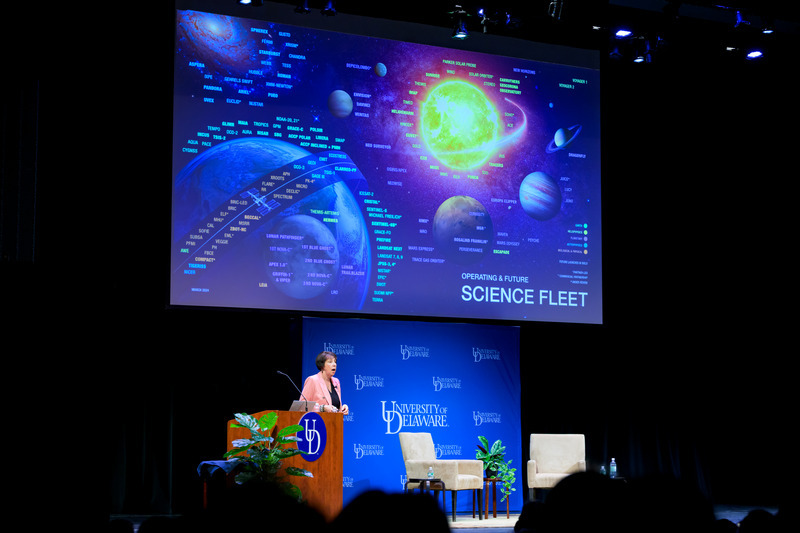
The invitation to “do NASA science” is real. NASA has dubbed April as “ Citizen Science Month ” in recognition of the volunteers who have contributed to thousands of scientific discoveries.
“I am blown away by the sheer amount of NASA grants and NASA work going on, either through Space Grant or direct NASA grants,” Fox said. “Soon, for example, we will be bringing samples back from Mars. It’s so difficult. Everybody, help us. How do we do this? These are national challenges, national priorities. So do NASA science!”
Assanis understands the importance of expanding public engagement. It is among the recommendations the President’s Council of Advisors on Science and Technology has made to President Biden, who appointed Assanis to the council in 2022.
Assanis posed multiple questions to Fox during a 30-minute “fireside chat.” The questions were submitted by the public as well as University students and researchers.
Among the issues raised:
The role of biology. Fox, who was director of NASA’s Heliophysics Division before becoming the head of the Science Mission Directorate last year, said she was unaware of the importance of biological research until she became NASA’s science chief and started looking at other areas of research the agency was pursuing. Now she sees its pivotal role, especially for protecting and sustaining the health of astronauts on long-term missions. She mentioned multiple UD projects, including those testing the impact of microgravity on growing food such as lettuce, as well as efforts to bioengineer materials and substances and recycle wastes for use in new ways. Researchers also are looking at how the human body responds to different medications in microgravity and Fox said astronauts will need a personal medication kit, customized for their specific needs.
Building on the moon. Fox said NASA’s Artemis program aims not just to return to the moon for a visit, but to establish a sustained presence there and be able to launch scientific projects there. “We are doing the work on that infrastructure and what it would take to have a sustained presence. We’re looking at byproducts and how they can be turned into something that can be used. You want to use the resources you have there. How do you build a launch site? How do you build a habitat? How do you protect yourself from a space weather event? What can you do with the resources you have rather than taking a Marriott or Hilton up with you?”
Walking on Mars. Fox said students now in kindergarten through high school will be the “Artemis” generation, the generation that will walk on Mars.
International presence. Asked how NASA’s mission compares to those of China, Japan, Russia and other nations, Fox said much has changed since the U.S. put the first human on the moon. “When we went to the moon in the 1960s, we went as a nation,” she said. “When we go now, we go as a global community.”
NASA’s environmental impact. The Earth’s climate and ecology are of keen concern to NASA and Fox said that concern includes the environmental impact of NASA launches. “We study those very carefully,” she said. “There are many different experiments looking at the effects of rocket plumes, both low down and higher up in the atmosphere. It’s something we take very seriously. It’s part of the whole climate we’re looking at. And when you look at stressors on the Earth’s atmosphere, you look at every stressor.”
Evacuating Earth. Asked if we’ll need to evacuate Earth at some point, Fox said, “The more important thing to do is to look after the health of our planet.”
Working for NASA. Asked if international students could work for NASA, Fox sketched out many such scenarios. NASA employees must be citizens, she said, but there are many ways to participate in the work of the world’s largest space agency. “You don’t have to have a NASA badge to work for NASA. You could be here at the University of Delaware, working with any of the research groups that are working on NASA missions building hardware, for example, building the instruments that are going to space. There are ways to be involved in NASA without necessarily being a civil servant.”
NASA’s Vision for Powerful Science
In her public lecture, Fox traced some of the extraordinary research that has emerged since the 2017 launch of the Parker Solar Probe, which in December will come closer to the sun than any other human-made spacecraft. Fox was the project scientist on this mission. UD’s William Matthaeus, Unidel Professor of Physics and Astronomy, helped to lay the scientific foundation for the mission and worked on three of its instrument teams.
She shared extraordinary images produced by the James Webb Space Telescope , launched in 2021, and showed how these images, when combined with those captured by the earlier Hubble Space Telescope, provide nuanced views and complementary data about far-distant galaxies.
She talked about robotic missions that collect samples, such as rocks and dust from asteroids, the ongoing quest to find conditions favorable to life — specifically the presence of carbon and water — and about developing partnerships with commercial companies that provide a variety of services, such as making deliveries to space.
NASA’s Artemis program, with its goal to develop infrastructure on the moon and use it to send crews to Mars and launch spacecraft for even deeper exploration, requires extensive understanding of how such long-term missions would affect the health and wellbeing of astronauts. This highlights the need for more research in biological and physical sciences. It also requires innovative ways of building new structures in space.
Fox also recommended a visit to NASA headquarters in Washington D.C., and a virtual visit to the Earth Information Center’s online headquarters at Earth.gov .
‘No job is beneath you’
Throughout the day, Fox savored encounters with students and took as many of their questions as time allowed.
A frequent request was for her advice on how to get a job at NASA.
“There’s no one path,” she said. “I never set out to be the head of science for NASA. I just enjoy the job I’m doing.”
She urged students to seek out internships, go to lectures, pursue many opportunities to learn and explore the possibilities.
She also urged students and aspiring leaders to embrace the idea that “no job is beneath you.”
“If you’re on a team, something needs to be done,” she said. “The best team leads will do anything.”
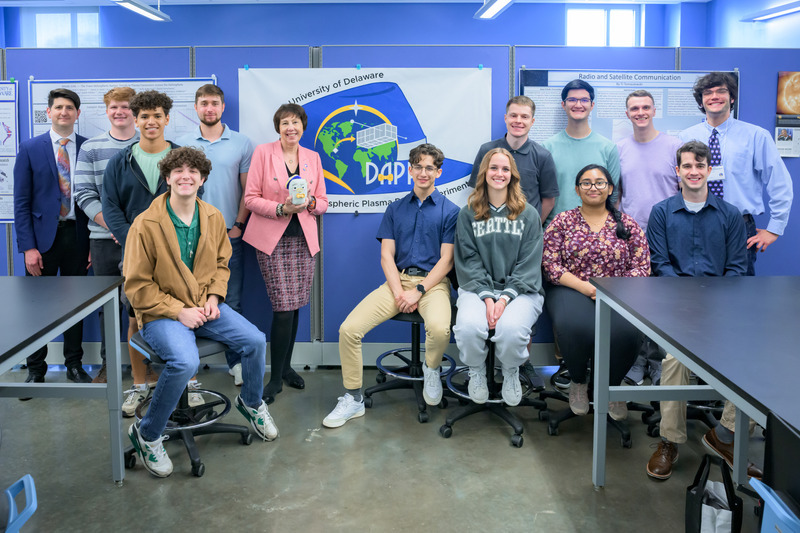
She urged students with interest in leadership to take an interest in what everyone on the team is doing.
“If you want to be successful on a team, you need to be knowledgeable,” she said. “Then you can relate to the problem. You can only do that if you put the time in. But you’ll be respected as a leader, because people will know you care about them.
“I identify with an empathic leader,” she said. But there are times, she said, when every leader has to say, “OK, I understand the problem. Now get it done.”
Fox also urged students to talk to those with different roles on the team.
“As a project scientist, the thing that made me efficient and effective was I talked to the engineers,” she said. “Part of it is showing an interest.”
Fox said talking to the engineers about the science objectives of a mission gave them greater understanding of the important role they played in the mission.
She remembered taking Eugene Parker — for whom the Parker Solar Probe was named — into the clean room, where the massive NASA spacecraft was under construction.
“Yes, I said, ‘Parker meet Parker,” she recalled with a laugh.
Fox said Parker got teary with emotion as he saw the powerful instrument his research had inspired.
Engineers in the room asked if they could meet Parker.
“One guy teared up and they had a two-hand shake,” she recalled. “And he said, ‘It’s such an honor to meet you.’ And Parker said, ‘No, it’s an honor to meet you. You’re the people who brought this amazing machine into being. Thank you so much.’
“That meant the world to the engineers,” she said.
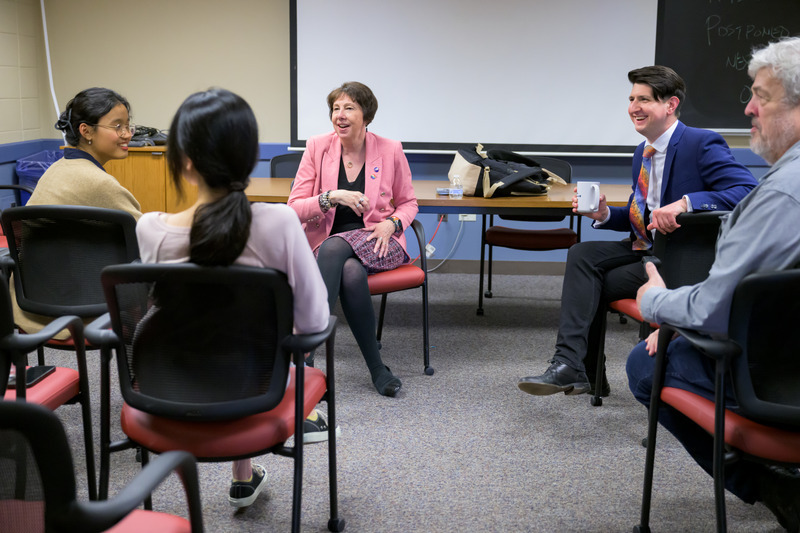
Lab tours and research presentations
Fox’s day at UD started with a visit to the annual symposium of the Delaware Space Grant Consortium . The consortium, led by UD’s Matthaeus, includes students and researchers from the University of Delaware, Delaware State University, Delaware Technical and Community College, Wilmington University, Swarthmore University and Villanova University.
Sitting in the front row with Matthaeus and Professor Jim McDonald, deputy director of Delaware Space Grant, she listened to several presentations and interacted with the students before she was whisked away from Perkins Student Center for a trip to UD’s Science Technology and Advanced Research (STAR) Campus.
There, she met with Kelvin Lee, UD’s interim vice president for research, scholarship and innovation and director of the UD-based National Institute for Innovation in Manufacturing Biopharmaceuticals ( NIIMBL ).
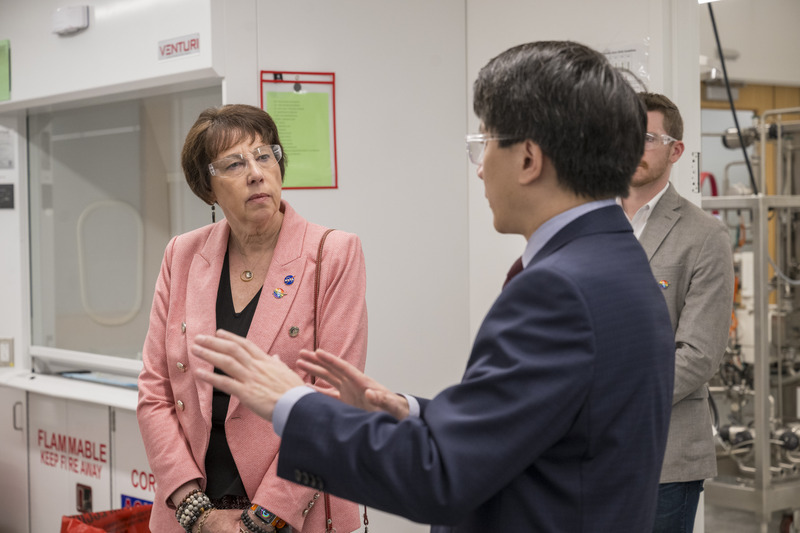
NIIMBL is a Manufacturing USA Institute, sponsored by the U.S. Department of Commerce and based in UD’s Ammon Pinizzotto Biopharmaceutical Innovation Center. Its mission is to solve problems common to manufacturers of biopharmaceuticals and improve the speed and efficiency of producing safe, effective medicines. It pursues that mission through public-private partnerships, with more than 180 members, representing academia, industry, government and non-profit organizations.
Fox also met with Mark Blenner, associate professor of chemical and biomolecular engineering, who has sent yeast strains to the International Space Station. He is working on how to create things astronauts will need if they are working for months on the moon or on Mars. His research focuses on biomanufacturing nutrients, medicines and vitamins, and explores ways to turn waste products into useful materials.
Fox had a working lunch at the nearby FinTech Innovation Hub, where she heard about Qingwu Meng’s research into growing lettuce in space . Meng, assistant professor of controlled-environment horticulture, has sent experiments to the International Space Station to test the effects of different light sources on plant growth.
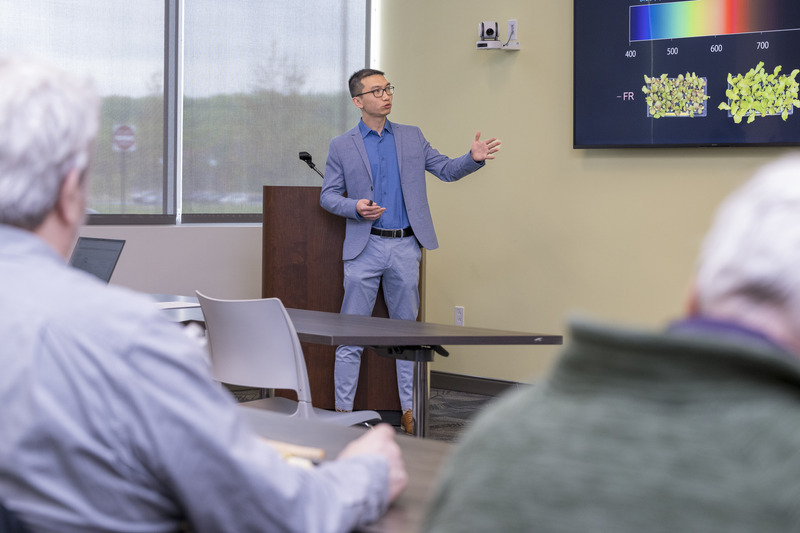
She also heard about the “rock stars of the universe” — magnetic massive stars — from UD astrophysicist Veronique Petit , who is working to find out where their magnetic fields come from.
And she heard from UD astronomer John Clem, who has launched massive, high-altitude research balloons from Antarctica to measure cosmic-ray electrons and positrons. The January launch of the Anti-Electron Sub-Orbital Payload (AESOP-Lite) mission set a NASA altitude record in Antarctica of 15,551 feet.
“There is no substitute for altitude,” Clem said. “The higher the altitude, the less the atmospheric background.”
Later, she visited the new Delaware Space Observation Center , directed by space plasma physicist Bennett Maruca and based in UD’s Harker Interdisciplinary Science and Engineering (ISE) Lab. Maruca’s students recently learned their satellite mission to study conditions in Earth’s upper atmosphere was accepted for launch by NASA in 2026 as part of its CubeSat Launch Initiative .
At the Center for Composite Materials , Fox talked with Professor Shridhar Yarlagadda about his work on the Hard Upper Torso (HUT) component of NASA’s next-generation spacesuit — the xEMU spacesuit — which is in development for astronauts working in space, outside of the protective environment of a spacecraft or space station.
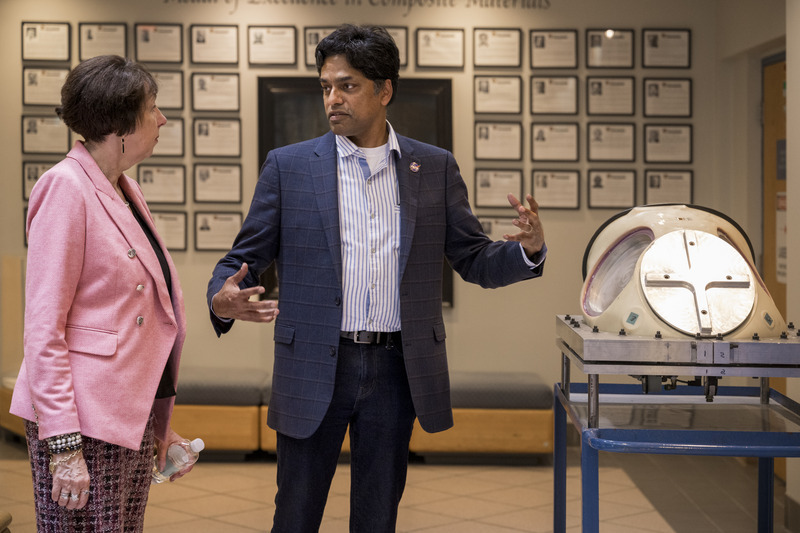
Finally, she visited the Remote Sensing Lab at Robinson Hall, where she heard from postdoctoral researcher Lingsheng Meng, a member of oceanographer Xiao-Hai Yan ’s lab. Yan uses remote sensing to study changes in deep ocean environments. Xinfeng Liang, associate professor and graduate director in the College of Earth, Ocean and Environment, also talked about using NASA data to study changes in the ocean.
Pinki Mondal, assistant professor in the Department of Geography and Spatial Sciences and a resident faculty member of the Data Science Institute, described her use of satellites to detect and track salt patches on coastal farmland. The white patches arise when coastal storms push saltwater onto farmland and they are deadly to crops. Mondal’s team created a “Salt Patch Mapper” application to help track areas where salt patches are appearing and disappearing.
Fox also heard from Tracy DeLiberty, deputy dean of the College of Earth, Ocean and Environment and a member of the Delaware Center for Geographic Education , which works with public school teachers to develop their geospatial science skills, and from Matt Shatley of UD’s Center for Environmental Monitoring and Analysis , who talked about the use of satellite data to track coastal flooding and monitor evacuation routes.
Fox then had dinner with Matthaeus, his wife, Colleen, and Maruca.
“Ben and I were rather exhausted after a long and rewarding day,” Matthaeus said, “but Nicky was still energetic, saying how much fun she had and how much she loves her job. What an amazing scientist and human being. Her visit did so much good for our space-related research at Delaware.”
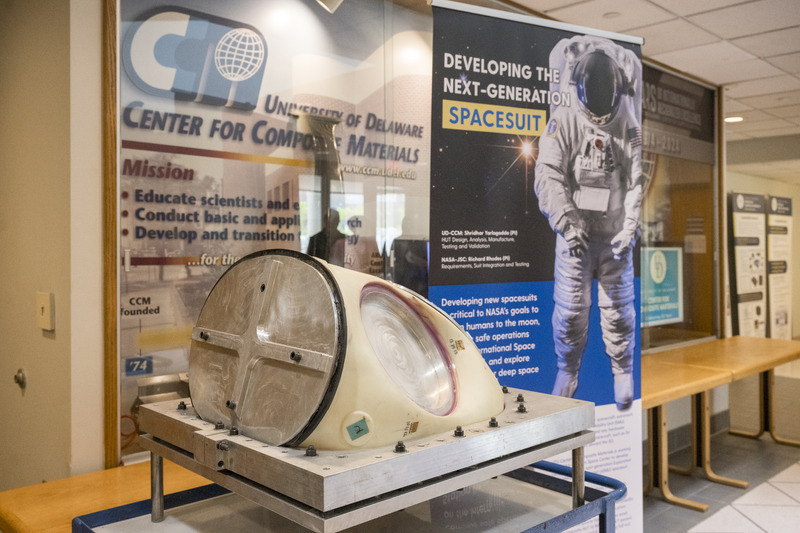
More Research Stories
Making delaware-in-space history.
April 17, 2024
Article by Beth Miller

Optical memory of crystals
April 15, 2024
Article by Erica K. Brockmeier
Families fighting cancer together
April 10, 2024
Article by Amy Cherry
See More Stories
Subscribe to UDaily >
Have a udaily story idea.
Contact us at [email protected]
Members of the press
Contact us at 302-831-NEWS or visit the Media Relations website
ADVERTISEMENT
- Campus & Community
- Nation & World
- Culture & Society
- UD Magazine
- In Memoriam
- Media Experts
Office of Communications & Marketing 105 E. Main St. Newark, DE 19716 [email protected] Phone: 302-831-2792
- Bahasa Indonesia
- Slovenščina
- Science & Tech
- Russian Kitchen
The story behind the Kurchatov Institute, the birthplace of Russian nuclear power
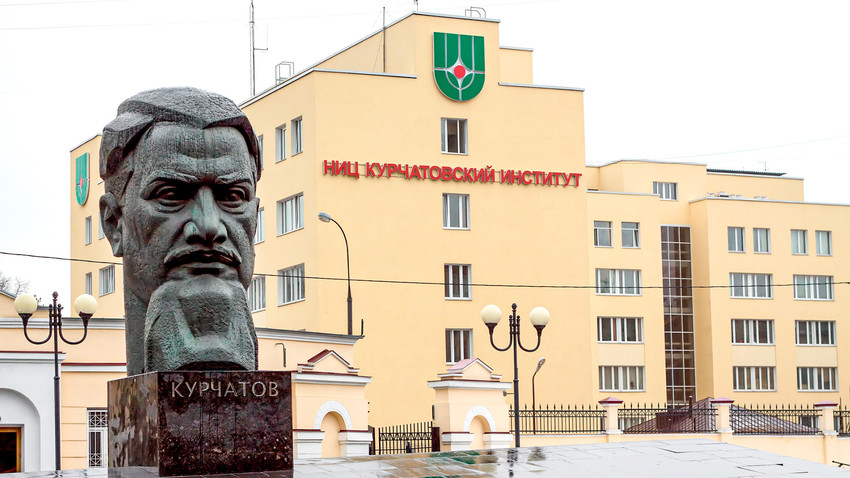
From the first Soviet nuclear bomb to the emergence of the Russian internet - the Kurchatov Institute of Atomic Energy has been a birthplace of innovation in Russia for a long time now. In 2018, it celebrated its 75th anniversary.
“The nuclear reactors designed within the walls of the Institute and used in our industry, shipbuilding, medicine, space and defense sectors, have become the symbols of our state’s power,” Russian President Vladimir Putin at its anniversary celebration.
Who was Igor Kurchatov? And what were the Institute’s main achievements over the history? Here is what you should know about this institution that remains central to the Russian nuclear sector.
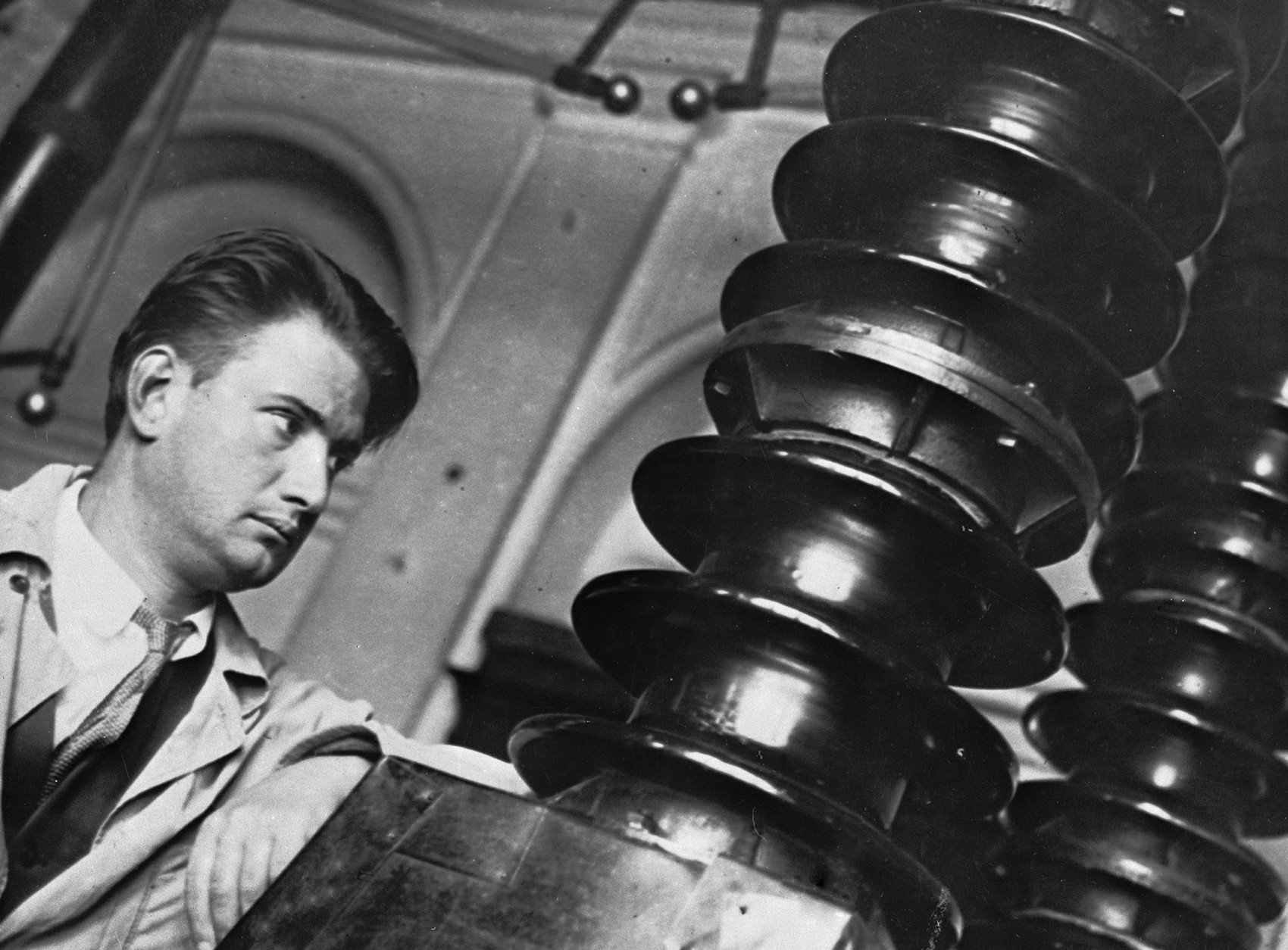
Igor Kurchatov (1903-1960)
Secret Lab. 2
Founded in 1943, the Kurchatov Institute originally went by the name “Laboratory No. 2”. Such an inconspicuous title was designed to keep its work secret - after all, it was established to invent the first ever nuclear bomb. In all documents the laboratory was listed as “an assembly workshop” and uranium was called silicon. All project participants went through a complex system of security checks and had to sign official Soviet secrets laws.
It was only in 1960 that the institute was named after Igor Kurchatov, its first head and an outstanding nuclear physicist. It was under his command that during the first 15 years of the lab’s work Soviet scientists not only reached their initial goal and created the first Soviet nuclear bomb (1949) but also developed the first cyclotron in Moscow (1944), the first nuclear reactor in Europe (1946), the world’s first thermonuclear bomb (1953), the world’s first industrial nuclear power plant (1954), the first Soviet nuclear reactor for submarines (1958) and nuclear-powered icebreakers (1959), and the largest facility for conducting controlled thermonuclear reactions (1958).
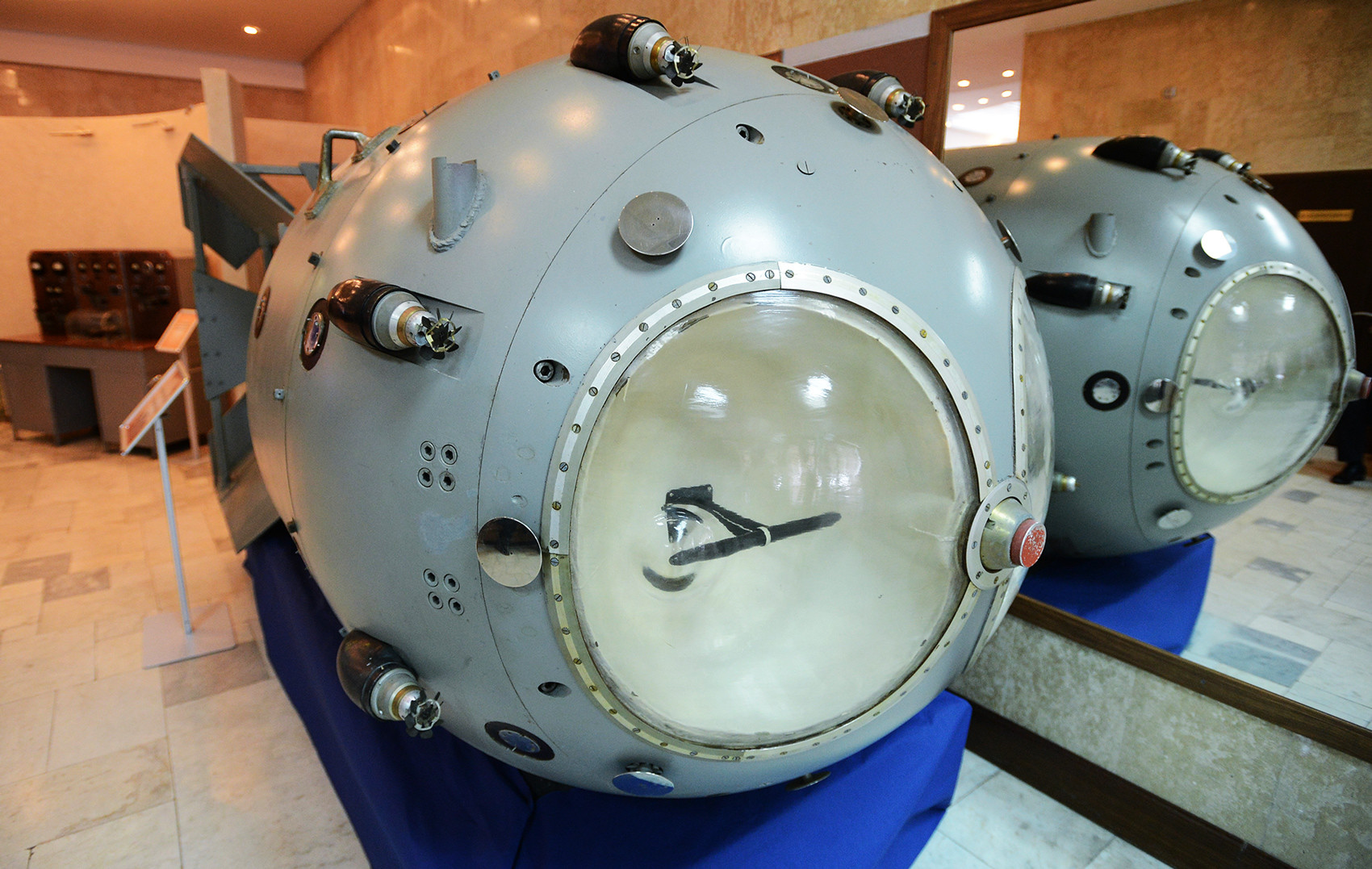
The model of the first Soviet nuclear bomb RDS-01 exhibited at the Russian Federal Nuclear Center – All-Russian Scientific Research Institute of Experimental Physics (RFNC-VNIIEF) in Russia's Sarov.
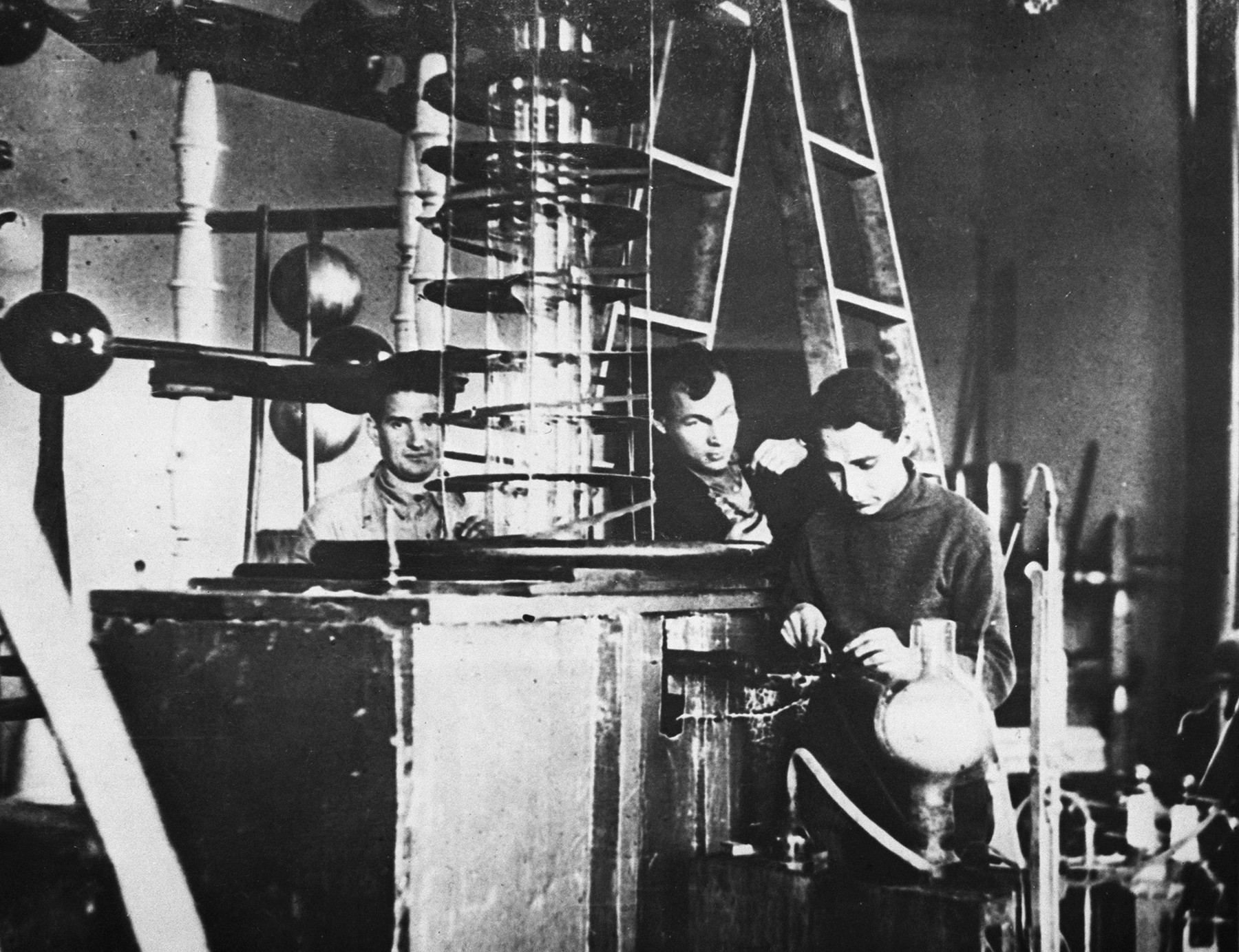
Igor Kurchatov and his colleagues at work.1932.
Kurchatov had a strong personality that inspired his fellow colleagues. Those who knew him recalled he was an energetic and jovial leader and no one else would have done a better job than he did. Kurchatov had time for everything: he was able to visit every facility of the institute, check the progress, talk to colleagues, cheer them up and formulate a task. His employees looked forward to meetings with him that always inspired them and remained in memory for a long time.
“Among the thousands of people that dealt with a nuclear problem at that time, there was no one more popular and more respected than this giant with a slow club-foot gait, ever-radiant eyes and warm short name ‘Beard’,” Anatoly Alexandrov, physicist and second director of the Kurchatov Institute, wrote remembering Kurchatov.
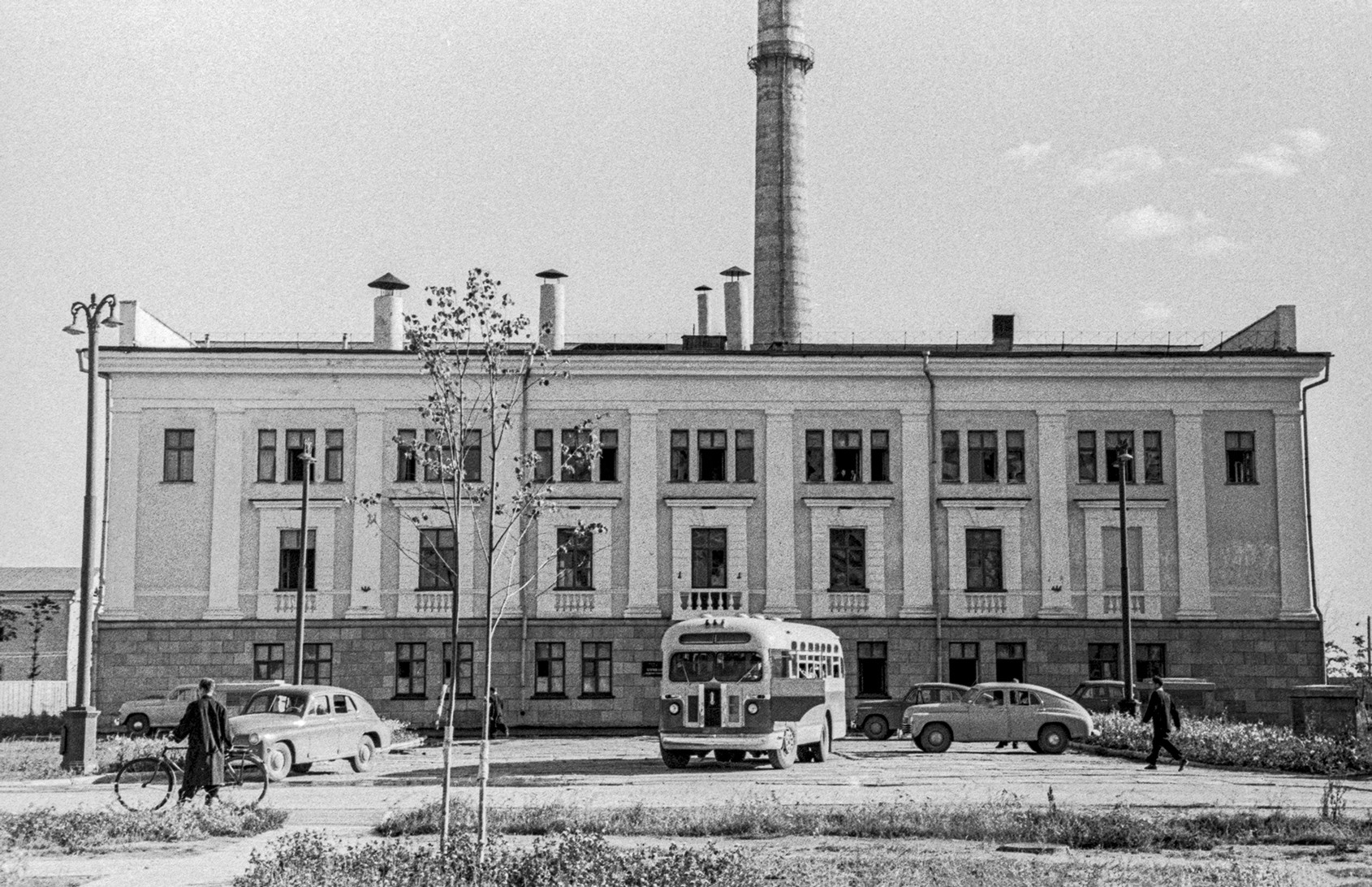
The world’s first industrial nuclear power plant in Russia's Obninsk. 1955.
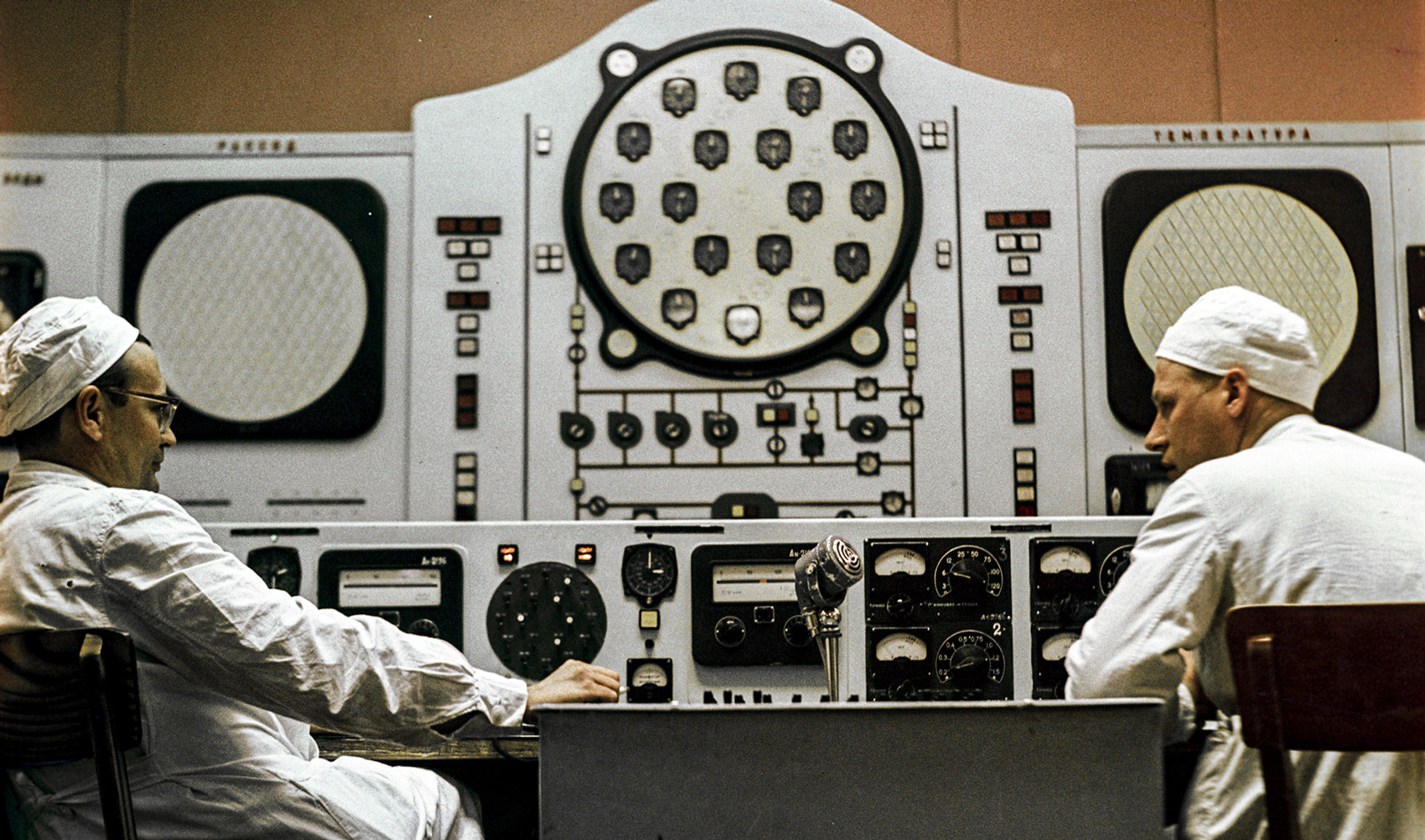
Inside the nuclear power plant in Obninsk. 1964.
Then and now
Later, in 1968 the institute obtained record results on plasma confinement using a tokamak, a toroidal chamber with magnetic coils. Created at the Kurchatov Institute, tokamak has become the main research tool for controlled thermonuclear fusion throughout the world.
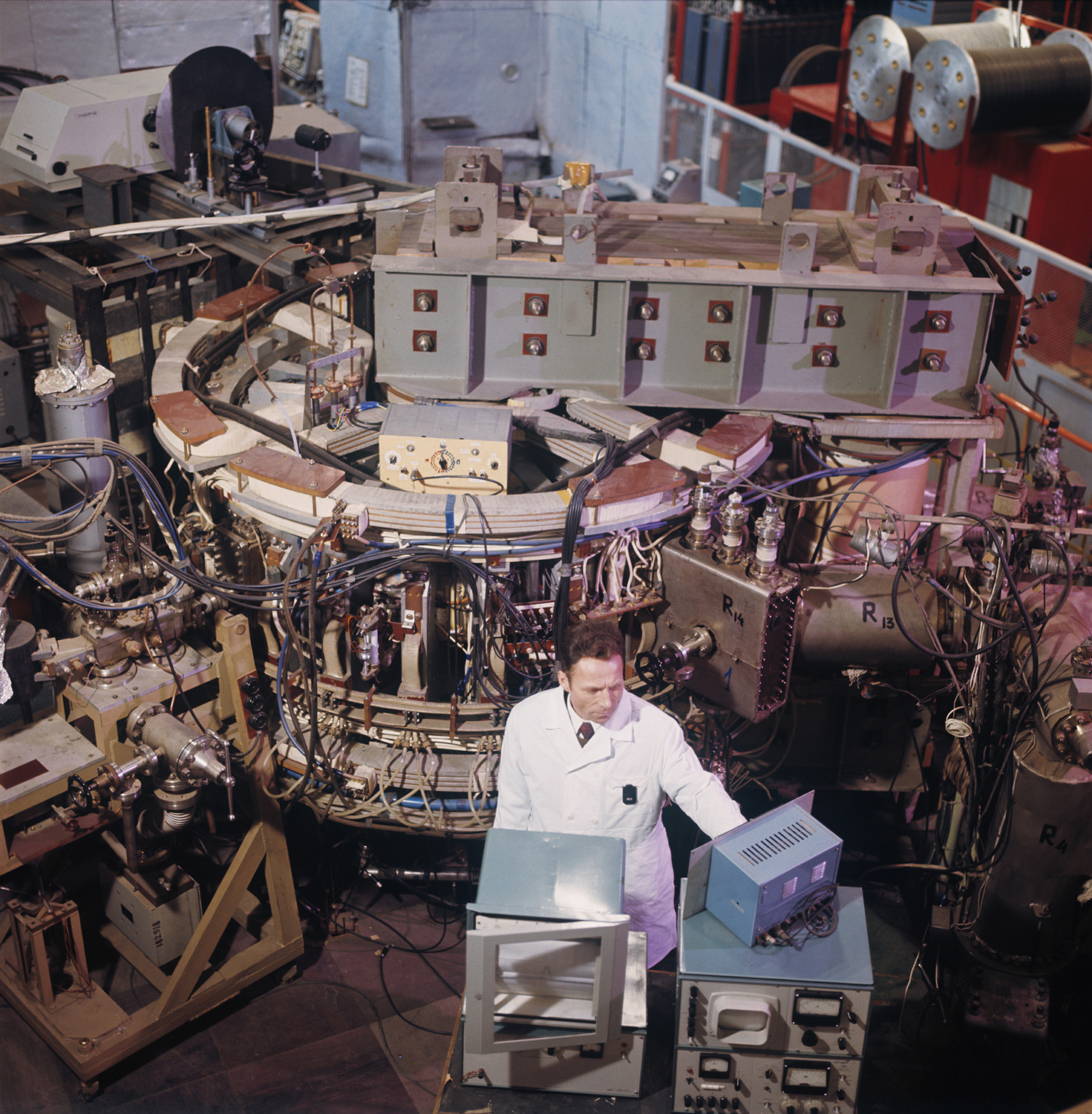
The world's first tokamak "TO-1".
In the next decade, the institution rapidly developed microelectronic technologies including ion implantation, lithography, plasma chemistry, thin films. All of these have become the basis for the development of nanotechnology at the institute, the creation of hybrid systems and supercomputers. In 1975, came a new large tokamak T-10 - today it’s still being used for checking equipment for ITER (International Thermonuclear Experimental Reactor), the first experimental thermonuclear reactor in the world. The institute also has the large tokamak T-15 with a superconducting magnetic system.
The Kurchatov Institute is also directly tied to the emergence of the Internet in the Soviet Union, and then in Russia. On August 1, 1990, the first computer network of the Union scale Relcom was founded on the basis of the Kurchatov Institute. The first thing to do was connect computers in scientific institutions in Moscow, Leningrad, Novosibirsk, and Kiev. And on Aug. 28 of the same year, the first computer communication session took place on the territory of the USSR with a foreign one, established at the University of Helsinki.
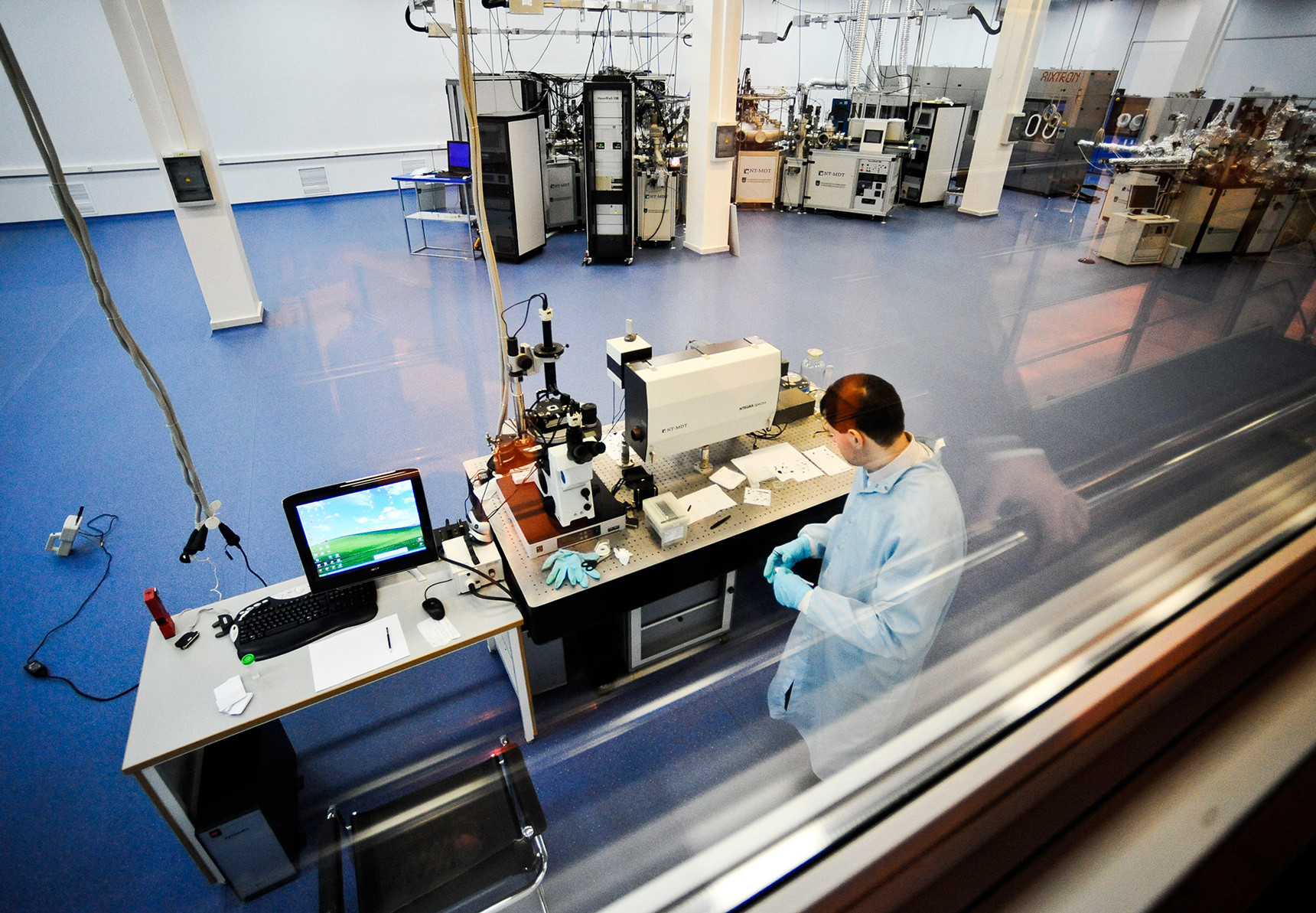
The work inside the Kurchatov Institute today.
Today the institute comprises a range of separate research centers dealing with a range of scientific questions - all of them come together under National Research Center “The Kurchatov Institute” umbrella.
The core activities of the center remain the safe development of nuclear energy, controlled thermonuclear fusion and plasma processes, low and medium energy nuclear physics, solid state physics and superconductivity, meson chemistry. Also, serious research is being conducted in the field of nano and biotechnology, the creation of new materials and drugs. Among some of the most interesting projects the institute is working on right now is finding solutions to protecting humans from radiation in space - allowing for long-term space travel and making it possible to get rid of negative memories for rehabilitation purposes (like treating people with “Afghan syndrome”).
If using any of Russia Beyond's content, partly or in full, always provide an active hyperlink to the original material.
to our newsletter!
Get the week's best stories straight to your inbox
- 5 most deadly industrial and transportation disasters in the USSR
- Who was Valery Legasov, the Soviet scientist that saved the world from Chernobyl?
- How one nuclear Soviet submarine managed to sink twice
This website uses cookies. Click here to find out more.
- Thu. Apr 25th, 2024
Best Global Research Positions in Agriculture and Biosciences
Research Associate Job (PhD Position) in Environmental Science at University of Kaiserslautern-Landau in Germany
By Agristok

Research Associate Job (PhD Position) in Environmental Science at University of Kaiserslautern-Landau in Germany; With over 20,000 students, more than 300 professorships and around 160 degree programs, the University of Kaiserslautern-Landau (RPTU) is the technical university of the state of Rhineland-Palatinate. As a place of top international research, it offers excellent working conditions and career opportunities. Those who study, research or work at RPTU experience a cosmopolitan environment and shape the future.
The position with the possibility of a doctorate is to be filled as part of the DFG-funded project “Scaling of biochemical and hydraulic controls on nitrate uptake and removal in streams”. The project aims to investigate the processes that control nitrate uptake in medium-sized watercourses. Turnover rates of nitrogen due to assimilatory uptake by phototrophic organisms (N uptake) and dissimilatory uptake (N removal) by heterotrophic bacteria in streams and their sediments are investigated. In particular, we analyze the role of river hydraulics and riverbed morphology as important but comparatively unexplored influencing factors. The project will be carried out jointly with the Helmholtz Center for Environmental Research (UfZ) in Magdeburg, where a second PhD position with complementary tasks will be filled.
- The opportunity to do a doctorate in an interdisciplinary research project of high relevance to environmental science
- Excellent supervision and optimal professional and interdisciplinary qualification
- The freedom to master even the most demanding challenges between basic research and practical application
- The opportunity to work in an interdisciplinary and international team, as well as integration into national and international research networks
Your area of responsibility:
- Characterization of the hydraulic and morphological conditions in the study streams
- Measurement of water exchange between surface water and the river bed
- Estimation of oxygen and CO2 turnover (metabolism) in the streams using sensor measurements
- Scientific analysis and publication of the results and their relationship to nitrate turnover (in cooperation with project partners)
Your requirements profile:
- Knowledge in environmental fluid mechanics, hydraulics and hydrology of streams demonstrated by a Master degree in hydrology, geoecology, environmental engineering, environmental sciences or related fields
- Experience with high-resolution methods for hydromorphological measurements and in-depth knowledge of aquatic biogeochemistry are desirable
- Willingness to participate in multi-day measurement campaigns on rivers in Central Germany, as well as very good communication skills in English are required
- Health promotion
- Family Service Center
- Vocational Training
- Flexible working hour and home office
- Retirement provision
- Sport & Fitness programms
- Culture & Leisure offers
- Local recreation in the Palatinate Forest
RPTU stands for diversity among all employees. We welcome applications from all interested parties, regardless of their ethnic and social origin, age, religion, gender, disability and sexual orientation or identity. Preference will be given to severely disabled persons and persons equivalent to them if they have the appropriate qualifications and suitability. The RPTU aims to increase the proportion of women in areas where women are underrepresented. Applications from scientists from abroad are explicitly welcome. The position is limited in time in accordance with the German law on fixed-term contracts in science (WissZeitVG).
Your application:
We look forward to receiving your detailed application (CV, references, etc.) by 15.06.2024 at the latest. Please submit your application using the “Online Bewerbung” button below or via our application portal ( APPLY ONLINE ). For technical questions, please contact Prof. Dr. Andreas Lorke (e-mail: [email protected] ).
See More Opportunities Like this here .
Share this:
Related post, phd funded position in endocrinology of treefrogs at university of mississippi, united states (salary: $30,000 to $32,000/year), ms research assistantship in pollinators and floral resources of thornforest – south texas at university of texas rio grande valley (state), phd funded position in pfas and herbicides in sub-tropical fish at university of florida in the united states (salary: $30,000/ year), leave a reply cancel reply, discover more from agristok.
Subscribe now to keep reading and get access to the full archive.
Type your email…
Continue reading

What would you like to do?
Category Select one Administrative Business Development Clinical Clinical Development College Job Compliance Corporate Services Engineering Finance Government Affairs Health Economics Human Resources Information Systems Law/Legal Logistics Maintenance Manufacturing Marketing Medical Affairs Medical Services Operations Postdoctoral Process Development Procurement Project Management Public Relations Quality Regulatory Research Safety Sales Sales & Marketing Operations Scientific Strategy and Innovation Supply Chain Training Value and Access
Job Type Select one Full time Part time
Where would you like to work?
City Select one Albany Albuquerque Algiers Anchorage Atlanta Austin Baltimore Bangkok Beijing Billings Birmingham Birmingham Boca Raton Bogotá Boise Boston Bradenton Breda Bridgeport Bristol Bucharest Budapest Buenos Aires Burlington Burnaby Cairo Cambridge Cambridge Chandler Changchun Changsha Charleston Charlotte Cheyenne Chicago Chongqing Cincinnati Cleveland Columbia Columbus Dallas Danbury Dayton Denver Des Moines Detroit Diegem Dongguan Dothan Dublin Duluth East Pensacola Heights Edinburgh Erie Fargo Fort Myers Gilbert Glasgow Greater Manchester Guangzhou Handan Harbin Hartford Holly Springs Hong Kong Houston Huntington Indianapolis Istanbul Jackson Jacksonville Jiaxing Juncos Jupiter Kansas City Kansas City Kuala Lumpur Ladrido Lanzhou Las Vegas Leeds Lexington-Fayette Lisbon Little Rock London Los Angeles Louisville Madrid Manchester Melbourne Memphis Mexico City Miami Milan Milwaukee Minneapolis-St. Paul-Bloomington Mississauga Montreal Munich Nantong New Albany New Albany New Haven New Orleans New York Newark Oklahoma City Omaha Orlando Paris Parkersburg Philadelphia Phoenix Pittsburgh Portland Portland Prague Providence Raleigh Richmond Riyadh Rochester Rockville Rotkreuz Saint Paul Salt Lake City San Diego San Francisco Santa Clara São Paulo Seattle Seoul Shanghai Shenyang Singapore Sioux Falls Søborg Sofia South San Francisco Southampton St Louis Suqian Sydney Taichung Taipei Tampa Thousand Oaks Tokyo Toledo Tucson Utrecht Uxbridge Uxbridge Vancouver Vienna Virginia Beach Warsaw Washington D.C. West Greenwich Wichita Wilmington Xi'an Yangzhou
Country Select one Algeria Argentina Australia Austria Belgium Brazil Bulgaria Canada China Colombia Czechia Denmark Egypt France Germany Hong Kong SAR Hungary Ireland Italy Japan Malaysia Mexico Netherlands Poland Portugal Puerto Rico Remote Romania Saudi Arabia Singapore South Korea Spain Switzerland Taiwan Thailand Türkiye United Arab Emirates United Kingdom United States
State Select one Alabama Alaska Alberta Algiers Province Arizona Arkansas Bangkok Bavaria Beijing Municipality Bogota D.C. British Columbia București Budapest Buenos Aires F.D. Cairo Governorate California Canton of Zug Capital Region Central and Western District Chongqing Municipality Colorado Connecticut Delaware District of Columbia Dubai England Flanders Florida Galicia Gansu Georgia Guangdong Hebei Heilongjiang Hlavní město Praha Hunan Idaho Île-de-France Region Illinois Indiana Iowa Istanbul Jiangsu Jilin Juncos Kansas Kentucky Kuala Lumpur Leinster Liaoning Lisbon District Lombardy Louisiana Madrid Maine Maryland Massachusetts Mazovia Mexico City Michigan Minnesota Mississippi Missouri Montana Nebraska Nevada New Hampshire New Jersey New Mexico New South Wales New York North Brabant North Carolina North Dakota Ohio Oklahoma Ontario Oregon Pennsylvania Quebec Rhode Island Riyadh Region São Paulo Scotland Seoul Shaanxi Shanghai Municipality Singapore Sofia-grad South Carolina South Dakota Taiwan Tennessee Texas Tokyo Utah Utrecht Vermont Vienna Virginia Washington West Virginia Wisconsin Wyoming Zhejiang
Associate Scientist - Immuno-Oncology Research
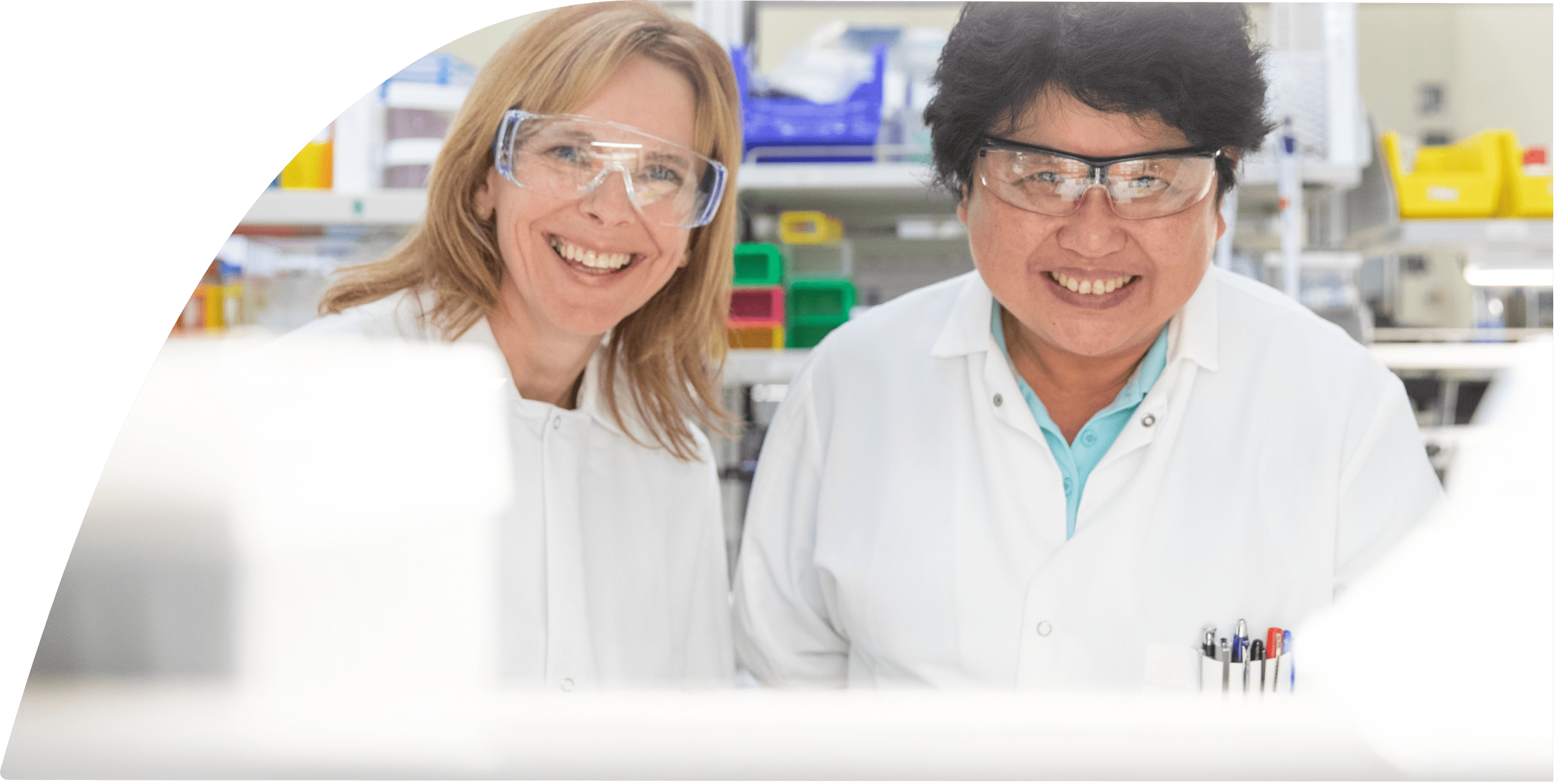
RADIUS Select Miles 5 miles 15 miles 25 miles 35 miles 50 miles
HOW MIGHT YOU DEFY IMAGINATION?
You’ve worked hard to become the professional you are today and are now ready to take the next step in your career. How will you put your skills, experience and passion to work toward your goals? At Amgen, our shared mission—to serve patients—drives all that we do. It is key to our becoming one of the world’s leading biotechnology companies, reaching over 10 million patients worldwide. Come do your best work alongside other innovative, driven professionals in this meaningful role.
Associate Scientist
What you will do
Let’s do this. Let’s change the world. In this vital role you will [top-line statement connecting primary position responsibility to employer brand].
- Design and perform in vitro studies to assess the biology of novel targets and evaluate mechanisms of action of therapeutic molecules.
- Collaborate closely with colleagues in In Vivo Pharmacology to support and execute pharmacodynamic studies.
- Perform literature and database surveys to support new target ideation and evaluation.
- Effectively communicate plans, results, and analyses to cross-functional teams.
What we expect of you
We are all different, yet we all use our unique contributions to serve patients. The professional we seek will have these qualifications.
Basic Qualifications:
Master’s degree and 1 year of Scientific experience
Bachelor’s degree and 3 years of Scientific experience
Preferred Qualifications:
- Master’s Degree in immunology or a related discipline and 3+ years of scientific experience in an industry setting or recently graduated Ph.D.
- Hands-on experience in laboratory techniques including primary T cell and mammalian cell cultures, siRNA/DNA transfection, genome editing, qRT-PCR, ELISA and western blot.
- Expertise in the isolation and flow cytometry-based analysis of human or murine immune cells.
- Prior experience with tumor-immune cell co-cultures and performing cytotoxicity assays is preferred.
- Proactive, curious, and eager to learn and grow.
What you can expect of us
As we work to develop treatments that take care of others, we also work to care for our teammates’ professional and personal growth and well-being.
The expected annual salary range for this role in the U.S. (excluding Puerto Rico) is posted. Actual salary will vary based on several factors including but not limited to, relevant skills, experience, and qualifications.
Amgen offers a Total Rewards Plan comprising health and welfare plans for staff and eligible dependents, financial plans with opportunities to save towards retirement or other goals, work/life balance, and career development opportunities including:
- Comprehensive employee benefits package, including a Retirement and Savings Plan with generous company contributions, group medical, dental and vision coverage, life and disability insurance, and flexible spending accounts.
- A discretionary annual bonus program, or for field sales representatives, a sales-based incentive plan
- Stock-based long-term incentives
- Award-winning time-off plans and bi-annual company-wide shutdowns
- Flexible work models, including remote work arrangements, where possible
for a career that defies imagination
Objects in your future are closer than they appear. Join us.
careers.amgen.com
Amgen is an Equal Opportunity employer and will consider you without regard to your race, color, religion, sex, sexual orientation, gender identity, national origin, protected veteran status, or disability status.
We will ensure that individuals with disabilities are provided reasonable accommodation to participate in the job application or interview process, to perform essential job functions, and to receive other benefits and privileges of employment. Please contact us to request accommodation.
SHARE THIS JOB
Sign up for job alerts.
Stay up to date on Amgen news and opportunities. Sign up to receive alerts about positions that suit your skills and career interests.
Category* Select one Administrative Business Development Clinical Clinical Development College Job Compliance Corporate Services Engineering Finance Government Affairs Health Economics Human Resources Information Systems Law/Legal Logistics Maintenance Manufacturing Marketing Medical Affairs Medical Services Operations Postdoctoral Process Development Procurement Project Management Public Relations Quality Regulatory Research Safety Sales Sales & Marketing Operations Scientific Strategy and Innovation Supply Chain Training Value and Access
- Scientific, South San Francisco, California, United States Remove
Confirm Email
By submitting your information, you acknowledge that you have read our privacy policy (this content opens in new window)and consent to receive email communication from.
Related Content

Mission, Vision and Values
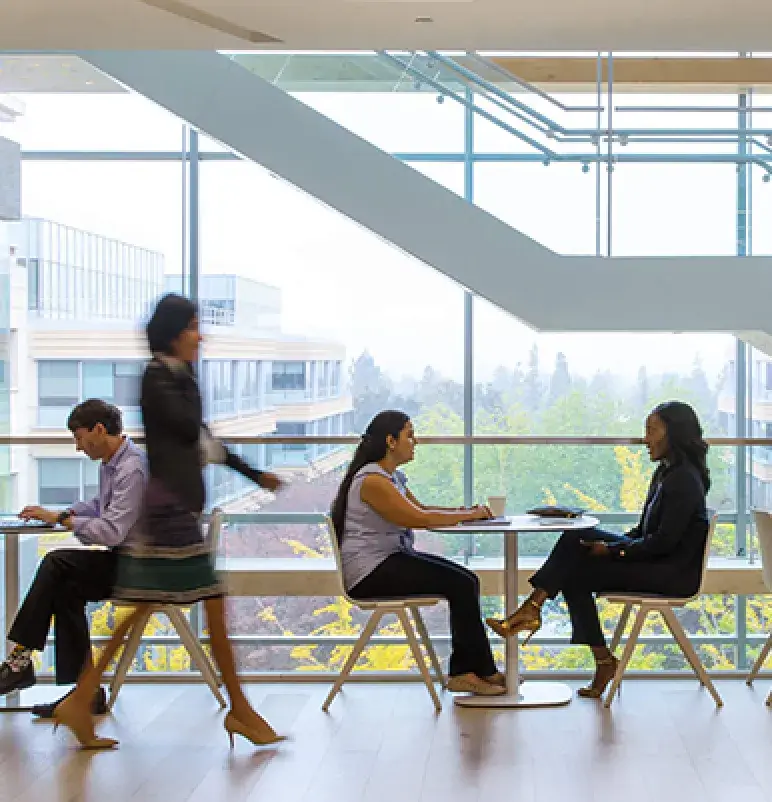
Diversity, Inclusion and Belonging

Amgen Stories
Careers at Brookhaven

a passion for discovery
Search Our Jobs
Current Categories Accounting, Budget and Financials Administration and Management Administrative Support Audit and Compliance Chemistry Computational Science Designer Engineer - Combined Engineer - Electrical Engineer - Environment, Safety and Health Engineer - Mechanical Environment, Safety and Health Facilities Support IT Manager Manual Trade Material Science Multidiscipline Operations Support Physics Physics Support Postdoctoral Research - Biology Postdoctoral Research - Biophysics Postdoctoral Research - Chemistry Postdoctoral Research - Computational Science Postdoctoral Research - Electrical Engineering Postdoctoral Research - Environmental Science Postdoctoral Research - Materials Science Postdoctoral Research - Multidiscipline Postdoctoral Research - Physics Project Controls Scientific Research Scientific Support Student Assistant Technical Electrical/Mechanical Technology Engineering Training and Development Current Categories
- Current Employees
Or Let Us Search
Using your LinkedIn profile, we can find jobs that match your skills and experience.
Postdoctoral Research Associate -Surface Science of PFAS
The National Synchrotron Light Source-II (NSLS-II), a U.S. DOE Office of Science User Facility operated for the DOE Office of Science by Brookhaven National Laboratory (BNL), is seeking exceptional candidates for a postdoctoral position. The position is in the Complex Scattering Program. The work will make extensive use of the liquid interface scattering at the Soft Matter Interfaces (SMI) beamline of NSLS-II using a variety of X-ray scattering techniques, including grazing-incidence small- and wide-angle scattering (GISAXS/GIWAXS), and X-ray reflectivity along with X-ray fluorescence methods.
POSITION DESCRIPTION
The successful candidate will join our effort to investigate monolayers of per- and polyfluoroalkyl substances (PFAS), commonly referred to as “forever chemicals”. The investigation will use X-ray scattering, optical spectroscopy, tensiometry, and rheometry methods to understand the molecular structure and behavior of self-assembled PFAS monolayers at liquid interfaces in the presence of different ions and surfactants. The results of these studies will enhance the basic scientific understanding of interfacial structure-property relationships in fluorinated surfactants and enable improved methods for removal of PFAS from contaminated waters via sub-surface bubbling. The X-ray scattering measurements will take advantage of the unique synchrotron-based liquid surface spectrometer (only 2 in the US) at NSLS-II and the development of novel tender (2.05-5 keV) resonant X-ray liquid surface scattering. This work will be complemented by optical spectroscopy measurements carried out at BNL’s Center for Functional Nanomaterials (CFN). The candidate will collaborate with researchers at NSLS-II, CFN and universities.
Brookhaven National Laboratory and the Energy and Photon Sciences Directorate are committed to your success. We offer a supportive work environment and the resources necessary for you to succeed.
Essential Duties and Responsibilities:
In this position, you will have the following roles and responsibilities: • Perform experimental design, data collection and analysis from in situ liquid surface X-ray scattering experiments at NSLS-II. • Collaborate to develop and commission novel tender X-ray liquid scattering and optical spectroscopy capabilities. • Perform spectroscopy (IR and Raman, etc.) measurements. • Conduct surface tension, surface adsorption, and rheology measurements using lab-based tensiometers.
Required Knowledge, Skills, and Abilities:
You are qualified for this Research Associate position if: • You earned a PhD in Chemistry, Chemical Engineering, Environmental Engineering, Material Science, Physics, or a related science or engineering discipline within the past five years or will complete this degree prior to starting the position. • You are committed to creative and independent research, teamwork, and fostering an environment of safe scientific work practices. • You have excellent oral and written communication skills. • You have a proven track record of publications in peer-reviewed journals and conference presentations.
Preferred Knowledge, Skills, and Abilities:
You are well-matched to this position if you have some of the following: • You have experience with PFAS detection, fate and transport, separation, or destruction. • You have work experience in the field of surfactant science. • You have experience with grazing-incidence X-ray scattering, and/or X-ray reflectivity. • You have demonstrated experience with least-squares data fitting. • You have knowledge of Python or other scientific programming languages. • You have hands-on experience with commissioning, operating, and/or maintaining complex scientific instrumentation.
- BNL policy requires that after obtaining a PhD, eligible candidates for research associate appointments may not exceed a combined total of 5 years of relevant work experience as a post-doc and/or in an R&D position, excluding time associated with family planning, military service, illness or other life-changing events
- Brookhaven Laboratory is committed to providing fair, equitable and competitive compensation. The full salary range for this position is $70200 - $116200 / year. Salary offers will be commensurate with the final candidate’s qualification, education and experience and considered with the internal peer group.
Brookhaven employees are subject to restrictions related to participation in Foreign Government Talent Recruitment Programs, as defined and detailed in United States Department of Energy Order 486.1A. You will be asked to disclose any such participation at the time of hire for review by Brookhaven. The full text of the Order may be found at: https://www.directives.doe.gov/directives-documents/400-series/0486.1-BOrder-a/@@images/file
Equal Opportunity/Affirmative Action Employer
Brookhaven Science Associates is an equal opportunity employer that values inclusion and diversity at our Lab. We are committed to ensuring that all qualified applicants receive consideration for employment and will not be discriminated against on the basis of race, color, religion, sex, sexual orientation, gender identity, national origin, age, status as a veteran, disability or any other federal, state or local protected class. BSA takes affirmative action in support of its policy and to advance in employment individuals who are minorities, women, protected veterans, and individuals with disabilities. We ensure that individuals with disabilities are provided reasonable accommodation to participate in the job application or interview process, to perform essential job functions, and to receive other benefits and privileges of employment. Please contact us to request accommodation.
*VEVRAA Federal Contractor
Share This Job
Sign up for job alerts.
Find out about our career opportunities, news and events at Brookhaven National Laboratory.
Job Category Select a Job Category Accounting, Budget and Financials Administration and Management Administrative Support Audit and Compliance Chemistry Computational Science Designer Engineer - Combined Engineer - Electrical Engineer - Environment, Safety and Health Engineer - Mechanical Environment, Safety and Health Facilities Support IT Manager Manual Trade Material Science Multidiscipline Operations Support Physics Physics Support Postdoctoral Research - Biology Postdoctoral Research - Biophysics Postdoctoral Research - Chemistry Postdoctoral Research - Computational Science Postdoctoral Research - Electrical Engineering Postdoctoral Research - Environmental Science Postdoctoral Research - Materials Science Postdoctoral Research - Multidiscipline Postdoctoral Research - Physics Project Controls Scientific Research Scientific Support Student Assistant Technical Electrical/Mechanical Technology Engineering Training and Development
- Postdoctoral Research - Materials Science, Upton, New York, United States Remove
Confirm Email
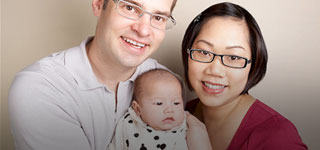
Family Programs
Brookhaven strives to assist employees to better manage their complex personal and professional lives. We celebrate our inclusive culture, progressive policies, programs, and active community involvement.
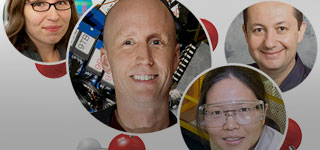
Goldhaber Fellowships
The prestigious Gertrude and Maurice Goldhaber Distinguished Fellowships are awarded to scientists with exceptional talent and credentials.
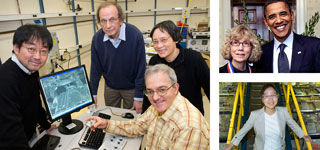
Awards and Discoveries
Collaborate with world-class experts at the frontiers of science. Research at Brookhaven has led to seven Nobel Prize-winning discoveries, and many Lab scientists have been honored with prestigious awards.

The Brookhaven Experience
Brookhaven Lab and its world-class research facilities are at the forefront of scientific discovery, and 60 miles east of midtown Manhattan. Employment at Brookhaven Lab comes with many benefits.

Everywhere Is Within Reach
Brookhaven Lab is located just miles from Long Island’s beautiful beaches, vineyards, restaurants, shopping, schools, and more. Plus, New York City and three major airports are within 60 miles of our gate.

We know that benefits are an important part of your employment. Our benefits programs address both the immediate needs of your family, such as insurance coverage, and long term needs like retirement savings.
Long Island, Where you BeLONG.
Long Island is a special place to be. A place where those who call it home share a sincere pride in its uniqueness. Wherever your intrique may take you, you can find where you BeLong on Long Island.
Postdoctoral Research Associate (Senior Scientist) / Reference Code 81

Job Information
Offer description.
The Department of Material Sciences and Process Engineering, Institute of Physics and Materials Science is currently seeking a Postdoctoral Research Associate (Senior Scientist).
Extent of employment: 20 hours per week (with option for a temporary increase to 40 hours from 01.10.2024)
Duration of employment: as of now - permanent
Workplace: 1190 Vienna, Peter-Jordan-Straße 82
Gross monthly salary and pay grade in terms of collective agreement for university staff (payable 14 times per year): B1 lit. b, € 2.376,20
Responsibilities:
- Independent research in the field of materials science with focus on defect tolerance of materials
- Planning, acquisition and management of research projects
- Establishing of a work group in the field of defect tolerance of materials under cyclic loading
- Publication of research results in peer-review journals
- Presentation of research results at national/international conferences
- Collaboration in research and teaching at the Institute of Physics and Materials Science
- Supervision of dissertations, Master’s and Bachelor’s theses
Required skills and qualifications:
- Doctorate degree/PhD in Material Science, Physics, Mechanical Engineering or related
- Very good written and spoken German and English or willingness to learn German in the first two years
- Sound scientific professional experience (postdoc)
- Experience in the planning, acquisition and management of research projects (public and private funding bodies)
- Experience with publication in peer-reviewed journals
- Experience with presentations at national and international conferences
- Sound theoretical and methodological knowledge in the field of defect tolerance of materials under cyclic loading in the range of high and very highload cycles
Desired skills and qualifications:
- Sound knowledge in the field of materials science and materials testing
- Experience in performing fatigue tests with the ultrasonic technique
- Experience in fractographic investigations (sample preparation, electron microscopy, etc.)
- Good international network in the scientific community
- Experience in knowledge transfer to society
- Ability to work in a team, communication skills, ability to work under pressure
- Experience in independent teaching in German and English
- Experience in the supervision of scientific theses
University of Natural Resources and Life Sciences Vienna seeks to increase the number of its female faculty and staff members. Therefore qualified women are strongly encouraged to apply. In case of equal qualification, female candidates will be given preference unless reasons specific to an individual male candidate tilt the balance in his favour.
People with disabilities and appropriate qualifications are specifically encouraged to apply.
Please send your job application incl.
- Motivation letter
to Personnel Management, University of Natural Resources and Life Sciences, Peter-Jordan-Straße 70, 1190 Vienna; E-Mail: [email protected] . (Reference code: 81)
We regret that we cannot reimburse applicants travel and lodging expenses incurred as part of the selection and hiring process.
www.boku.ac.at
Requirements
Additional information.
Please note that the full job description is only available in German.
Work Location(s)
Where to apply.
An official website of the United States government
Here's how you know
Official websites use .gov A .gov website belongs to an official government organization in the United States.
Secure .gov websites use HTTPS. A lock ( Lock Locked padlock ) or https:// means you've safely connected to the .gov website. Share sensitive information only on official, secure websites.
Most NSF systems and services, including NSF.gov, Research.gov and FastLane, will be unavailable from Friday, April 26, 11 p.m. EDT – Saturday, April 27, 8:00 a.m. EDT due to extended maintenance. We apologize for any inconvenience.
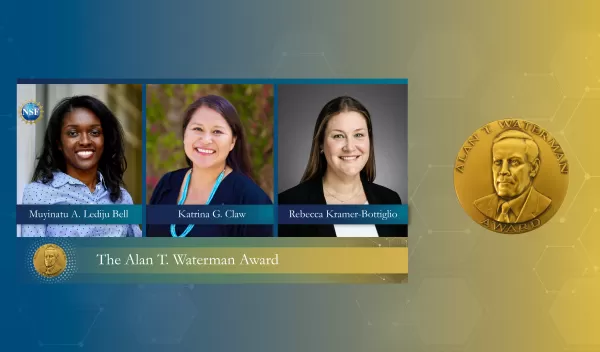
NSF honors 3 outstanding early-career researchers with the Alan T. Waterman Award
The U.S. National Science Foundation honored three researchers with the Alan T. Waterman Award, the nation's highest honor for early-career scientists and engineers.
The 2024 recipients: Muyinatu A. Lediju Bell, a biomedical engineer at Johns Hopkins University; Katrina G. Claw, a genetic scientist at the University of Colorado Anschutz Medical Campus; and Rebecca Kramer-Bottiglio, an engineer working in robotics at Yale University, were recognized for their innovative approaches and leadership in their respective fields and for pushing the boundaries of science in truly novel ways.
The Waterman Award will be presented to the recipients at a ceremony during the National Science Board meeting, which will be held in Washington, D.C., on May 1. In addition to a medal, awardees will each receive $1 million over five years for research in their chosen field of science.
"These three outstanding researchers exhibit extraordinary scientific research accomplishments and stand out as leaders among their peers," said NSF Director Sethuraman Panchanathan. "This award recognizes their contributions and is also a vital investment in the future of science discovery and innovation, empowering the awardees to deepen their research, expand their projects, and explore new frontiers in their field. More importantly, it enables these exceptional individuals to apply their groundbreaking work for the betterment of their communities and society at large."
Harnessing light and sound to improve biomedical imaging systems
Muyinatu a. lediju bell, johns hopkins university.
Muyinatu Bell knew at age 6 that she wanted to be a scientist. Among her earliest influences were the residents of Sesame Street, who captured her imagination by conducting "interesting experiments with colorful test tubes."
Inspired by those memories and guided by her mother and older brother, Bell is now a pioneering biomedical engineer, working in the intersection of physics, electrical and computer engineering, biomedical engineering and computer science. She has developed groundbreaking techniques that are transforming the utility of medical imaging, especially in ultrasound and photoacoustic imaging, by harnessing the power of light and sound to improve diagnostic capabilities and guide surgeries.
"My inspiration is drawn from a desire to improve disease detection, to deliver the earliest possible detection strategies as the best path to successful treatment plans, and to facilitate treatment plans that ensure the safest possible outcomes, particularly when surgery is involved," she said.
Bell, an associate professor at Johns Hopkins University, is best known for inventing the short-lag spatial coherence (SLSC) ultrasound beamformer, which significantly improves ultrasound image quality by reducing acoustic clutter. This invention motivated the development and refinement of the generalized contrast-to-noise ratio, a widely used metric that sets a new standard for image quality assessments. Bell has also adapted the SLSC technology to photoacoustic imaging, most recently using it to overcome problems related to skin tone bias in which melanin affects how deeply light can penetrate in photoacoustic imaging and is also responsible for generating acoustic clutter that obscures structures of interest. This technique developed by Bell benefits multiple communities, including patients with darker skin tones, women with dense breast tissue, and overweight or obese patients.
"I learned that acoustic clutter is one of the most common and detrimental ultrasound imaging artifacts," she said. "My breakthrough came when I was the first to realize that I can integrate spatial coherence functions, which contain characteristic differences between real tissue signals and acoustic clutter, and thereby deliver visual images of these differences. This visual display of the distinct differences offers improved image quality for patients underserved by ultrasound technology due to the presence of acoustic clutter. The same underlying principle applies to photoacoustic images."
Bell is a lecturer, mentor and scientific role model committed to engaging a diverse research community by serving in leadership roles on committees and programs aimed at supporting women in physics, computer science and engineering. She is the recipient of NSF awards from the Faculty Early Career Development (CAREER) program and the Smart Health program.
The NSF CAREER award "helped to give me the confidence that I am right where I belong, living my childhood dream, and with the award, I knew I would have resources to thrive as a scientist, at least for the next five years," Bell said. "I pursued many of the bold and creative ideas I proposed. I received supplements to mentor undergraduate students. My team grew and expanded. My students and collaborators contributed new and fresh perspectives and ideas. It was an amazing accomplishment and success that seeded, bred and fertilized more success. NSF support has been very instrumental to the progression of my career as a scientist and engineer."
The Waterman Award will assist Bell in expanding her current work in new directions and pursuing other avenues, she said. "I can now purchase new equipment to start a new line of research, hire the support and administrative staff that I need as I grow my lab, hire research scientists who will help me to expand new research opportunities, hire dedicated personnel to assist with multiple tech ventures originating from my lab. The possibilities are endless."
Building inclusivity in genetic research to improve disease prevention, treatment
Katrina g. claw, university of colorado anschutz medical campus.
Growing up in the Navajo Nation, Katrina Claw did not know what "scientific research" meant or that it could be a career. But she understood that practices like dry farming or herbal remedies used by her family were rooted in long-established methods refined over centuries and passed down through multiple generations.
"This was the science — Indigenous Science and Traditional Knowledge — that I grew up with and are fundamental to my worldviews today," she said. "The interconnectedness of all living and non-living entities and balance are concepts that I learned as a child, and these are still concepts at the core of my research program."
Claw is a genomic scientist and leader in Indigenous science, recognized for her contributions to pharmacogenomics and for fostering cultural and bioethical research participation within Indigenous communities. As a member of the Navajo Nation, she is dedicated to collaborative and community-based genetic research that produces better science and ethically benefits all participants.
As a co-principal investigator and a past predoctoral fellow, Claw received an NSF award from the Directorate for Social, Behavioral and Economic Sciences' Office of Multidisciplinary Activities in the Ethical and Responsible Research (ER2) program. Her project aligns with a key aim of the ER2 program, which is to foster ethical and responsible practice in science, technology, engineering and mathematics research communities. Her research program supports equity and inclusion of diverse populations in pharmacogenomic research and personalized medicine, addresses disparities in health and health care, and enhances ethical research with participation from American Indian, Alaska Native and other historically marginalized communities. She has established research partnerships with multiple American Indian, Alaskan Native and First Nations tribal communities.
Claw is an assistant professor in the Department of Biomedical Informatics at the University of Colorado School of Medicine, and her genomic research is at the forefront of disease treatment and prevention. She has demonstrated strong associations between nicotine metabolism and CYP2A6 gene variation in a tribally diverse Indigenous population. Claw's research further demonstrated substantial diversity in the versions of the CYP2A6 gene, which is strongly associated with nicotine metabolism, among Indigenous communities from different tribes and geographic regions. These findings suggest that diverse groups may benefit from personalized tobacco cessation treatment, guided in part by unique genetics.
"The foundation of my work is community-based participatory research, and I strive to use a culturally responsive and adaptive ethical framework that respects the principles of data sovereignty and tribal oversight," Claw said. "My overall goal is to show that community-engaged genomics research can bring about meaningful and impactful change in Indigenous communities. My research program studies pharmacogenomic variation and the cultural, ethical, legal and social implications (CELSI) of genomic research with Indigenous peoples. The past is inextricably linked to the present and the future, and the history of Native communities naturally extends my research into the ethical and social realms. Thus, my research projects involve both contemporary Indigenous peoples and Ancestors of the past."
Claw is a committed leader, mentor and contributor to national policy discussions for Indigenous communities, especially related to genetics. She is funded by the Native American Research Center for Health initiative to create a glossary of genetic terms and digital stories in Navajo. " Being awarded made me acutely aware of how my research interests and desire to work with Native communities was important, needed, and how few people from my tribal community were in the position to apply for these opportunities."
Claw is the first Waterman recipient from the Navajo Nation. "I hope that it will inspire some other young ch'ízhii budding scientists entering their first science fair competition, and I hope that my story will help others believe in themselves and move forward in careers in STEM. With the award, I'm excited to fund the community engagement and tribal capacity-building work that are so important to the future of Native peoples in science."
Creating robots that adapt and evolve to changing conditions
Rebecca kramer-bottiglio, yale university. .
Rebecca Kramer-Bottiglio has "always been drawn to math and prototyping, and the thrill of uncovering how things work," she said. "Engineering seamlessly integrates these passions."
Her multidisciplinary research approach incorporates materials science, robotics, artificial intelligence, biology and art. Her breakthrough design strategy of adaptive morphogenesis for robotics is inspired by biological adaptations, morphogenesis and evolution and extends techniques she developed to create shape-shifting and phase-changing materials. When integrated into robots, these new materials enable transformative new capabilities via unprecedented adaptive behaviors.
"Robots are traditionally mechanical assemblies designed to complete a single task in a specific context. In contrast, biological organisms adapt physiologically, behaviorally and morphologically in response to changing environmental conditions," Kramer-Bottiglio said. "My research focuses on imbuing next-generation robots with the ability to adapt and evolve like animals. I study multifunctional materials and their utility in soft-material robots capable of evolving their physical structure and corresponding behavior as they encounter new task demands or environments."
Kramer-Bottiglio developed an amphibious turtle-inspired robot with limbs made from coupled fluidic actuators and variable-stiffness materials that change between hydrodynamic flippers and load-bearing leg shapes depending on the environment. Adapting both the form and function of the robot enabled efficient movement both in water and on land, yielding energetic savings for multi-environment locomotion. With this morphing robot platform, she proved that morphological adaptation is a favorable strategy to expand the future capabilities of robots while simultaneously reducing the energy requirements to do so.
"Breaking through my own conception of what a robot is helped me realize their potential," she said. "If we discard the notion that robots must be mechanical assemblies of discrete components and instead consider them as material systems with multifunctionalities, we gain access to a host of new materials, techniques and tools that can be used to create the next generation of robots."
Kramer-Bottiglio is a mentor dedicated to broadening participation in STEM research. She is the recipient of awards from the NSF CAREER, Designing Materials to Revolutionize and Engineer our Future, Emerging Frontiers in Research and Innovation, Human-Centered Computing, and Innovative Technology Experiences for Students and Teachers programs.
"NSF has been incredibly important throughout my career, supporting my research in areas such as materials processing, soft robotics and engineering education," she said. "For instance, one NSF award supported a collaborative research project to test the hypothesis that the implementation of soft robot design experiences improves students' engineering self-efficacy and interest in engineering careers as compared to traditional robot design experiences. Through a partnership with experts in engineering education, we found evidence to support this claim. The research resulted in a new engineering design curriculum that has been sustainably integrated into an upper high school course with national dissemination. I am unsure that I would have been able to pursue such an interdisciplinary project without the support of the NSF."
The Waterman Award will enable Kramer-Bottiglio "to pursue interdisciplinary and high-risk research directions that hold the potential to unlock new capabilities for robots, enabling them to evolve on demand in response to changing tasks or environments," she said. "Robots that can evolve on demand provide a platform to study physical evolution-based optimization. How and when should a robot adapt its shape when switching between tasks or environments? What are the optimal shapes for specific tasks and environments? Can we use synthetic evolution to discover adaptation strategies that animals might use to adapt to our changing environment? Can the use of living materials in robots increase their adaptive capabilities? I hope to find out."
The award, established by Congress in 1975, is named for Alan T. Waterman, NSF's first director.
Research areas

IMAGES
VIDEO
COMMENTS
Staff Research Scientist - Plastic Bottle Innovation. Niagara Bottling. Diamond Bar, CA 91765. $116,624 - $163,274 a year. Easily apply. Supervises research scientists, engineers, and technicians. Presents and communicates research results internally and externally. Posted. Posted 25 days ago ·.
2.6. Postdoctoral Researcher - Plant-Pollinator Ecology. Wilberforce, OH. $49K - $76K (Glassdoor est.) The selected individual must be authorized to work in the United States and be in possession of a valid U.S. Driver's license at the time of appointment.…. Discover more. 24d. Central State University. 2.6.
Search Postdoctoral researcher plant science jobs. Get the right Postdoctoral researcher plant science job with company ratings & salaries. 38 open jobs for Postdoctoral researcher plant science. ... This position will be funded for 2 years (upon favorable annual reviews), with potential for advancement to Research Scientist depending on ...
People who searched for plant science jobs in United States also searched for plant breeder, plant scientist, plant geneticist, scientific editor, soil scientist, research scientist, assistant professor. If you're getting few results, try a more general search term. If you're getting irrelevant result, try a more narrow and specific term.
A bachelor's degree is the minimum requirement for plant science jobs. Students preparing for careers as plant scientists should take college courses in plant pathology, entomology, plant physiology, and biochemistry, among others. To conduct basic research or to advance to jobs directing applied research, a master's or doctoral degree is required.
Full Professor in Plant Biology at The Salk Institute for Biological Studies. La Jolla, California. The expected pay range for this position is $215,000 to $350,000. The Salk Institute for Biological Studies.
2 weeks ago. Today's top 14,000+ Plant Science jobs in United States. Leverage your professional network, and get hired. New Plant Science jobs added daily.
Careers/Jobs Careers in Botany Profiles; Jobs Board: Position Announcements, Fellowships, and Career Opportunities ... 2025 Oak Spring Plant Science and Plant Conservation Sabbatical Awards, N/A, ... The Center for Tree Science, The Morton Arboretum, Research Fellow; Deadline: 04/26/2024 Lisle, Illinois 03/26/2024 ...
Plant Science - Irrigation Management (temp-to-hire) The Morning Star Company Fresno, CA. $19 to $24 Hourly. Temporary. Collaborate in research and development activities if required. Qualifications: * Bachelor's degree in Plant Science preferred but not required. * Must be able to work under our system of Mission ...
Plantae's Career Center includes the only job board available for the global plant science community. Recent Job Postings. ... Plantae Presents: Exploring Plant Science Research Across the Globe: Insights from Leading Researchers Featuring Federico Ariel, Sónia Negrão, and Felipe Klein Ricachenevsky When: Friday, April 26, 2024, at 8:00 AM ...
Today's top 122 Engineering jobs in Moscow, Moscow City, Russia. Leverage your professional network, and get hired. New Engineering jobs added daily.
Be an early applicant. 1 month ago. Today's 472 jobs in Moscow, Moscow City, Russia. Leverage your professional network, and get hired. New Moscow, Moscow City, Russia jobs added daily.
740 Plant scientist jobs in United States. Most relevant. Therm-o-Rock East Incorporated. Quality Control Lab Technician. New Eagle, PA. $18.00 Per Hour (Employer est.) Easy Apply. Use of Microsoft Office (including Access, Excel, and Outlook) and other programs to generate and keep accurate quality records and certificates of analysis.…. 30d+.
The Center for Personal Dynamic Regulome at Stanford University is seeking a Life Science Research Professional 1 to perform basic functions and activities involved in defined research projects, and independently conduct and analyze experiments. ... Must have correctible vision to perform duties of the job. Ability to bend, squat, kneel, stand ...
Job Summary: Research in the Gisriel Lab, within the Department of Biochemistry, is focused on the molecular mechanisms of photosynthesis. The Scientist in this position will help to set up the laboratory equipment, train students on laboratory equipment, perform protein purifications, perform protein characterization, set up a growth room/area for cyanobacterial cultures, maintain ...
The Department of Neurology at UT Southwestern Medical Center is a nationally recognized leader in the comprehensive management of neurological conditions. Our vibrant department comprises more than 75 full-time faculty in 12 subspecialty sections, supporting a spectrum of complex and innovative approaches to neurological care, a broad range of novel research programs, and a panoply of ...
The invitation to "do NASA science" is real. NASA has dubbed April as "Citizen Science Month" in recognition of the volunteers who have contributed to thousands of scientific discoveries. "I am blown away by the sheer amount of NASA grants and NASA work going on, either through Space Grant or direct NASA grants," Fox said.
Founded in 1943, the Kurchatov Institute originally went by the name "Laboratory No. 2". Such an inconspicuous title was designed to keep its work secret - after all, it was established to ...
Research Associate Job (PhD Position) in Environmental Science at University of Kaiserslautern-Landau in Germany; With over 20,000 students, more than 300 professorships and around 160 degree programs, the University of Kaiserslautern-Landau (RPTU) is the technical university of the state of Rhineland-Palatinate.
Sep 18, 2020. Current Employee in Troutdale, OR, Oregon. Benefits are ok, every year seems to be a different insurance company. Search Plant research jobs. Get the right Plant research job with company ratings & salaries. 119 open jobs for Plant research.
Associate Scientist - Immuno-Oncology Research US - California - South San Francisco Apply Now JOB ID: R-186903 LOCATION: US - California - South San Francisco WORK LOCATION TYPE: On Site DATE POSTED: Apr. 22, 2024 CATEGORY: Scientific SALARY RANGE: 98,093.00 USD - 114,246.00 USD
Learn more about applying for Postdoctoral Research Associate -Surface Science of PFAS at Brookhaven National Laboratory ... Postdoctoral Research Associate -Surface Science of PFAS Job ID JR101115 Date posted 04/22/2024. The National Synchrotron Light Source-II (NSLS-II), a U.S. DOE Office of Science User Facility operated for the DOE Office ...
The Department of Material Sciences and Process Engineering, Institute of Physics and Materials Science is currently seeking a Postdoctoral Research Associate (Senior Scientist). Extent of employment: 20 hours per week (with option for a temporary increase to 40 hours from 01.10.2024)
As a member of the Navajo Nation, she is dedicated to collaborative and community-based genetic research that produces better science and ethically benefits all participants. As a co-principal investigator and a past predoctoral fellow, Claw received an NSF award from the Directorate for Social, Behavioral and Economic Sciences' Office of ...